












Rural communities are the backbone of our country, and the primary sector is our biggest export earner.
National will:
• Cut Labour’s red tape and ensure farming regulations are fit for purpose
• Supercharge the rural economy by doubling the RSE working cap, banning foreign farm-to-forest conversions for carbon farming and allowing normal rural activities on Highly Productive Land
• Get Wellington out of farming by replacing one-size-fits-all rules with local decision making
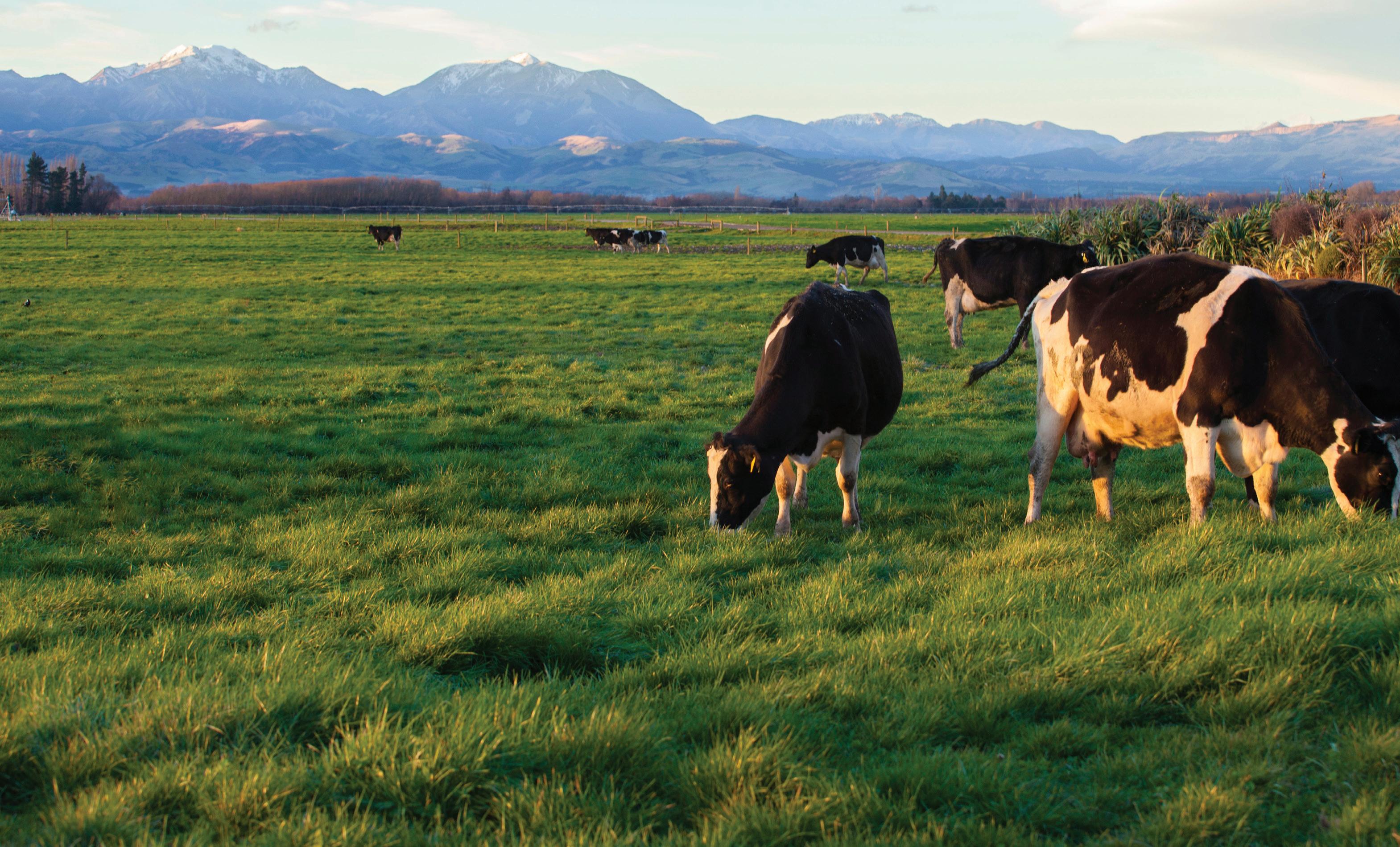
• Give farmers the tools they need to reduce emissions, by lifting the effective ban on GE and GM technologies and rewarding farmers for on-farm carbon sequestration.
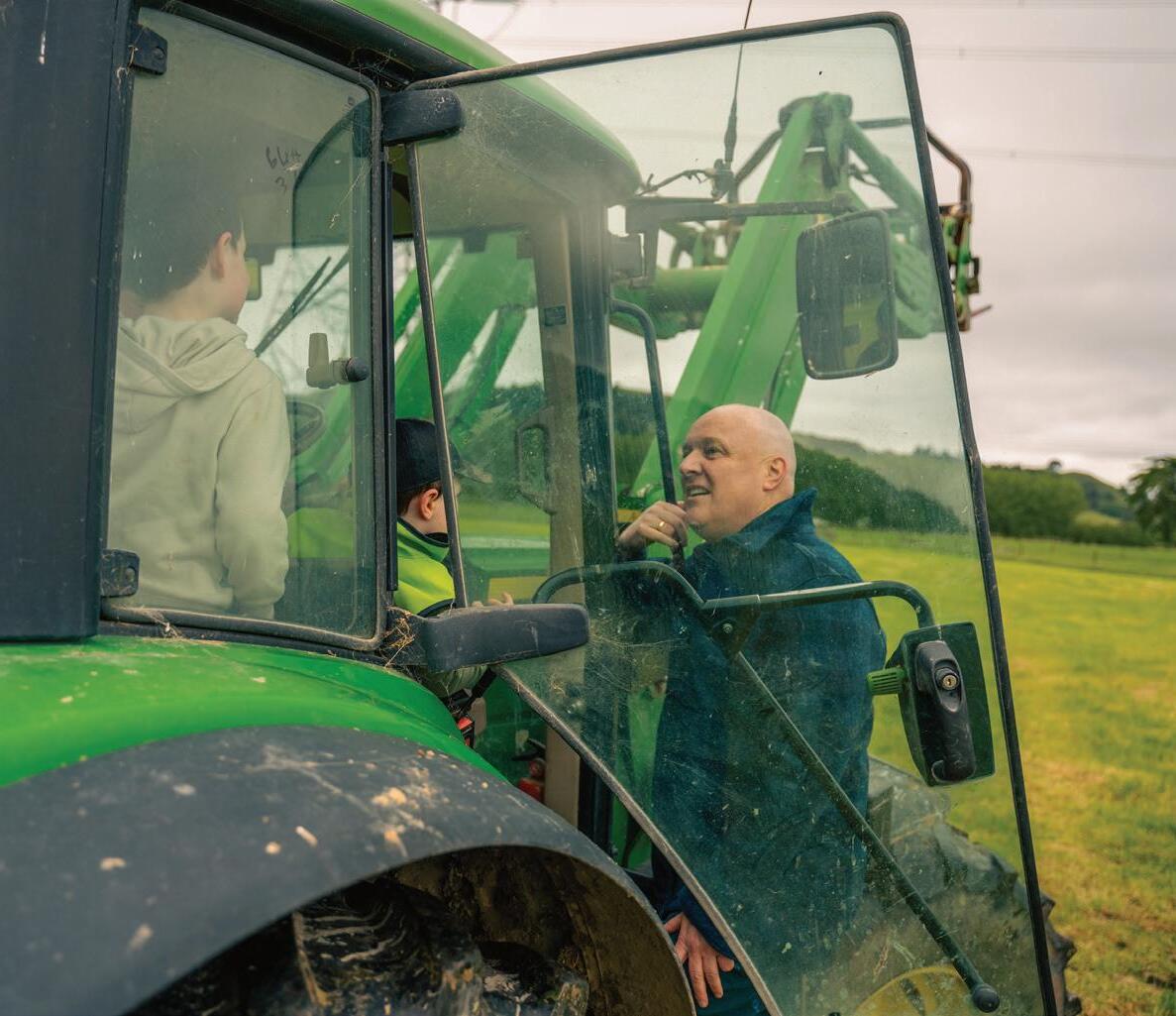

Kiwi farmers are among the most efficient in the world. National will back you because rebuilding the economy depends on a thriving primary sector.
 Authorised by J de Joux, 41 Pipitea St, Wellington.
Authorised by J de Joux, 41 Pipitea St, Wellington.
FARMERS HAVE expressed alarm at some banks setting targets to reduce emissions at a time when the sector is under growing financial strain.

Federated Farmers is warning that if banks push emissions targets onto farmers, they would be taking their business elsewhere.
Financed emissions are the greenhouse gas (GHG) emissions linked to the investing and lending activities of financial institutions. They are coming under more pressure to measure and disclose financed emissions as regulators assess climate risks.
BNZ says its dairy emissions reduction target is an 11% reduction in financed biological emissions intensity (kgCO2e / kgMS) by 2030 against a 2022 baseline.
The bank says having a climate resilient, efficient dairy sector is key to New Zealand‘s future success. BNZ plans to publish “a high-level transition plan” for the sector by April next year.

Federated Farmers executive recently met the bank to raise concerns about the target. Feds dairy section chair Richard McIntyre told Rural News that while the bank recognised the announcement was poorly timed, it stood by the targets.
“To come out with something like this while dairy farmers are in the middle of calving and under huge pressure financially seems completely out of touch with where their customers’ heads are at,” he says.
“Farmers are focused on keeping

their head above water and ensuring they have viable businesses, and I would have hoped BNZ would have been focused on the same thing – supporting farmers through a difficult period, not adding more complexity, cost, and compliance.”
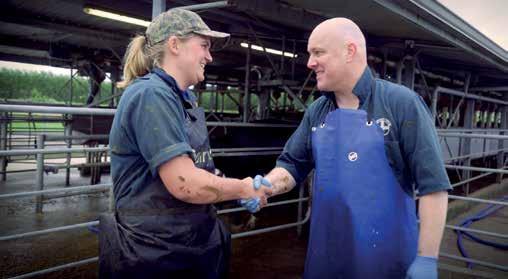
McIntyre questioned why the banks felt the need to push for climate change targets.
“We already have governmentimposed emission targets, and processors like Fonterra are going to be releasing their scope 3 emissions targets sometime soon,” he told Rural News
“I do wonder if they’re just making a pledge that they think somebody else
is going to have to enforce, and if they would be doing this if it was something they were going to have to drive themselves. If that is the case then it just sounds like greenwashing to me.”
McIntyre says if the BNZ wants to push climate targets onto farmers, that’s up to them.
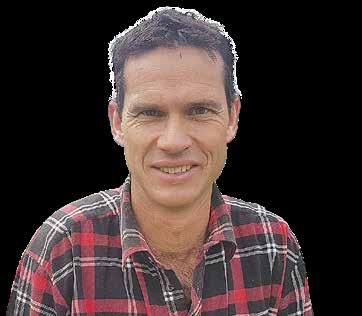
“But farmers have choices too, and some may choose to take their business elsewhere.”
BNZ’s general manager agribusiness
Dave Handley told Rural News that the work to tackle emissions requires a collaborative approach.
“Like all responsible businesses we are working closely with our customers as we all work towards the Gov-
peterb@ruralnews.co.nz

MAJOR PLAYERS in the primary sector are mobilising staff ahead of NIWA’s predictions that regions severely damaged by Cyclone Gabrielle are about to be hit by potentially one of the country’s worst droughts.
NIWA’s principal scientist, forecasting and media, Chris Brandolino told Rural News that weather patterns that are emerging will likely cause the early arrival of El Nino. He says NIWA is already starting to see dryness develop in parts of the North Island – including Hawke’s Bay and Tairāwhiti.
ernment’s target of net zero carbon by 2050,” he explained.
“In line with the Zero Carbon Act, and as required by incoming mandatory climate disclosure rules, BNZ has begun setting and disclosing decarbonisation targets. We published our first set of targets in May, covering a range of industries including dairy. Further targets for sectors such as real estate, transport, and sheep and beef will be published next year.”
Handley noted that while legislation sets the framework, the type of target varies and can be an absolute emissions reduction target or a physical intensity emissions target.
TO PAGE 3
Brandolino says this could see periods when for two or three days, temperatures will soar into the upper 20 degrees, then suddenly cool down again then the process starts all over again. He says this is unusual because NZ is still in the astronomical winter.
“Normally the dryness begins in November, but this year it is likely to kick in early – meaning October.”
To that end, NIWA and MPI have worked together to produce a ‘drought prediction tool’ which is on the NIWA website. Brandolino emphasises that this tool is not a weather forecaster, but rather it predicts the weather themes and level of dryness 35 days ahead and is updated daily. https://shiny.niwa.co.nz/droughtforecast/ – See more pages 10-11
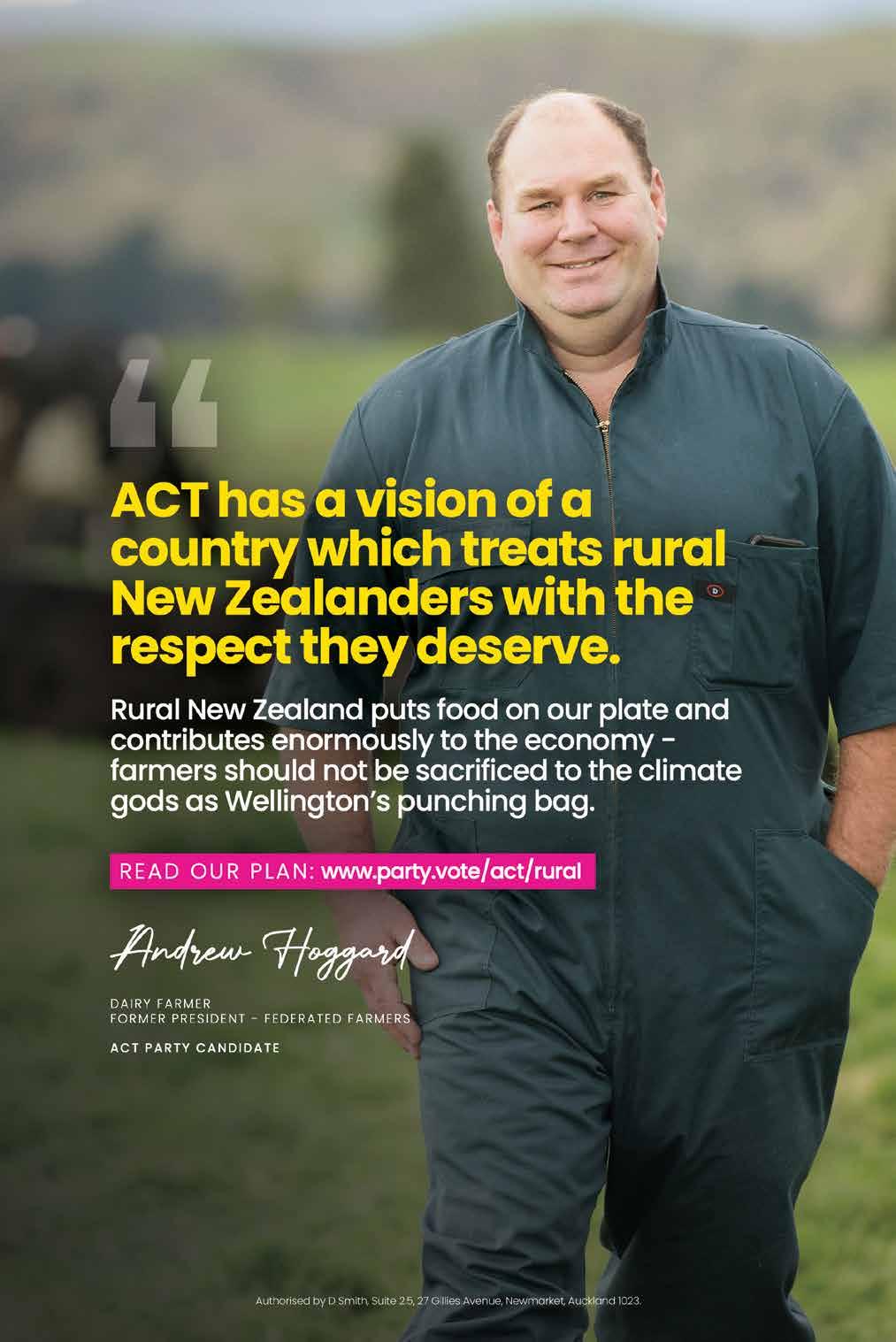

CHINA’S SLOWER than expected recovery from Covid-19 and an oversupply of Australian sheep meat is causing problems for NZ sheep farmers.
Rabobank’s senior agricultural analyst Emma Higgins says there is more pain to come before things start to settle down.
“The sheepmeat price schedule has come below the bottom of the five year price range, so it’s a bit more tricky there with some really tough market settings in the coming months.”
Higgins says the problem is the flood of Australian sheepmeat coming on to export markets, which is dragging down the price. She predicts that this will continue over the next few months and acknowledges that this is bad news for many sheep farmers who have been struggling with cyclonic weather.
“They have had good lambing percentages and are now being warned about a possible dry summer.”
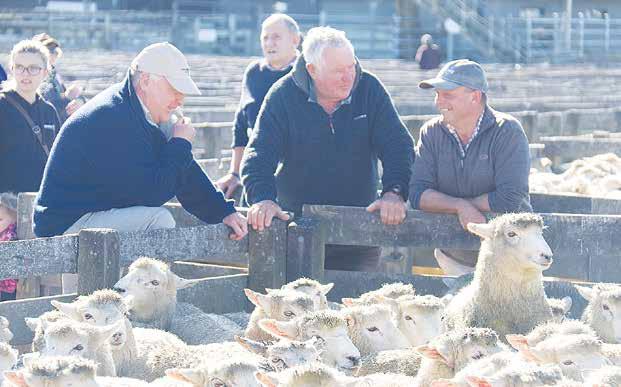
On the flip side, Higgins says there is some good news on the beef front with some stabilisation coming through in terms of farm gates prices in NZ. “In the last month these have
started to track upwards due to the price of beef lean trimmings starting to lift in export markets.”
She adds that with milk production in NZ declining, it should mean
that the schedule price will follow the normal season trend in the coming months.
@rural_news facebook.com/ruralnews
He points out that BNZ’s dairy target specifically focuses on emissions intensity associated with each kgMS produced, not absolute reductions.
“Recognising the dairy sector’s crucial role in New Zealand’s economy, our aim is to encourage growth in the sector by aiding it to become more efficient and sustainable, producing more with fewer emissions.”

Not all New Zealand banks have
set targets for the agri sector.
A spokesperson for ANZ says supporting farmers with their sustainability goals has been a key focus for us for several years.
“As the country’s main bank for more than 34% of farmers, we are very aware of the changeable landscape our farming customers face. We work closely with them to understand their specific challenges.
“We have not set financed emissions targets in NZ for agri.”
BNZ SIGNED up to the Net Zero Banking Alliance (NZBA) in October 2021. It is obliged to publish a first round of emissions reduction targets for priority sectors including dairy.
The industry-led, United Nations convened NZBA is a group of banks aiming to transition their lending and investment portfolios to net-zero emissions by 2050. It has 133 bank members from 43 countries holding a combined US$74 trillion in total assets. Membership of the NZBA comes with emissions reduction targets.
ANZ’S parent company ANZ Group Holdings is also a member of NZBA.

years, consistently outselling other farm bikes in its class. And with this great offer, it’s set to continue. Talk to your Suzuki dealer today.


NO DEPOSIT, 12 MONTHS TO PAY, 4.99% INTEREST P.A.
$6,086+ SUZUKI DR200SEStrict quality control during manufacture is one thing. But it’s on Kiwi farms where the real testing is done. And it’s there that the Suzuki DR200SE has proven itself for almost 30
DAIRY PRICES rose for the second successive Global Dairy Trade (GDT) auction last week, but the jury is still out on whether prices have turned a corner.
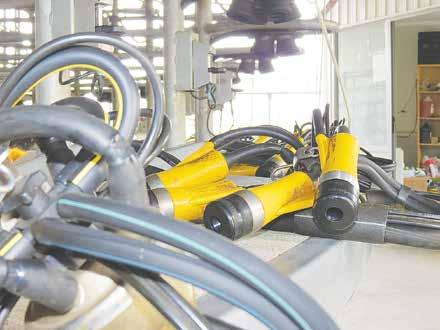
Over the past two GDT auctions, flagship whole milk powder (WMP) prices have jumped 5.3% and 4.6% respectively, up from three-and-a-half year lows.
But Westpac’s senior agri economist Nathan Penny points out that while the positive result is welcome, global dairy prices remain low. In
annual terms, WMP and overall prices are still down by 25% and 24%, respectively.
“Recall also that WMP prices fell 18% over August. Indeed, WMP prices are still around 10% below the level back at the end of July,” Penny explains.
He says that it’s difficult to judge yet whether prices have turned a corner.
“To make that call we will need to see further price lifts over October and into November. Indeed, the recent price rises may have more to do with the fact that low prices have brought buyers back to the
market rather than any fundamental change or improvement in global
dairy demand.” A key factor in the coming months will be
New Zealand’s spring production: it has the potential to provide fresh
direction to prices.
At this juncture and given that 2022 spring production was weak, Penny anticipates some lift in annual terms.
“However, that is likely to be tempered by the fact that cashflow pressures are likely to mean that farmers purchase less feed and other inputs,” he adds.
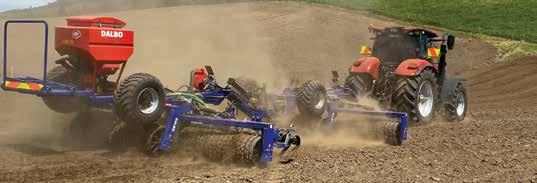


“At the same time, we continue to monitor developments in China for signs of a pickup in dairy demand.”
Penny says, as of now, there have been few developments of note.
“As a result, we continue to expect that demand will not improve
BEEF + Lamb New Zealand (B+LNZ) says it’s backing the country’s sheep farmers by choosing wool tiles to carpet its Wellington office.
“When we were looking at recarpeting our Wellington office, it was a no-brainer to choose sustainable over synthetics and support New Zealand sheep farmers,” says Sam McIvor, chief executive of B+LNZ.
“It was great to have the option of Wools of New Zealand commercial carpet tiles – it’s the right choice for the planet and our people.”
Kate Acland, chair of B+LNZ,
says that wool is naturally biodegradable, flame-resistant, stain resistant and looks great.
“It feels more comfortable to walk on and sustainability-wise it ticks the box.

“The wool used in our new carpet tiles is also sourced from farmers committed to world-leading sustainable farming practices. As a farmer myself, I’m proud to be supporting Kiwi farmers and rural communities.”
Wools of New Zealand chief executive John McWhirter says more companies and other organisations are seeking to ensure their premises are more sustainable and
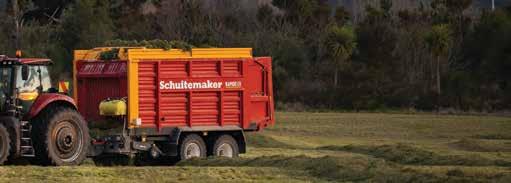
until late 2023 at the earliest, but more likely in the new year.”
ASB senior economist Chris TennentBrown notes that while it’s pleasing to see prices recover further, the bank remains cautious on the outlook.
He points out that prices are lifting off three and a half year lows. Tennent-Brown still believes a sustained recovery in Chinese demand is a necessary precursor to a substantial recovery in prices.
“On that front, it was pleasing to see a significant lift in the quantity of WMP purchased by China at this event.”
looking after the wellbeing of their people.
“Wool carpets and tiles do not cost the earth and there is growing interest from consumers in choosing wool over plastic,” he says.
“The many beneficial natural properties of our wool tiles make them ideal for use in commercial spaces and they are a very good choice for a wide range of organisations.”
Wools of New Zealand says its commercial wool tile range is a key part of the company’s strategy to significantly improve outcomes for New Zealand strong wool producers.
a turn, and for our huge reliance on China.”
CLIMATE CHANGE, record low farmer confidence and an avalanche of government-sponsored regulations dominated the inaugural Rural Issues Debate in Hamilton earlier this month.
About 300 industry leaders and farmers turned up at Mystery Creek to hear five major parties thrash out their policies for the rural sector. About 35,000 people tuned in for the livestream, according to Beef+Lamb NZ.
Agriculture Minister Damien O’Connor, National’s agriculture spokesman Todd McClay, former Federated Farmers president and ACT candidate, Andrew Hoggard, retiring Green MP Eugenie Sage and NZ First candidate Mark Patterson lined up for the 90-minute talk fest.
While O’Connor spent most of the time defending his Government’s emission target and new regulations for farmers around water and the environment, McClay was at ease parroting his party’s policies he says will make farming less stressful and cumbersome. He reiterated National’s pledge to review methane targets based on global warming and got a round of applause.
The debate was jointly organised by B+LNZ, Feds and DairyNZ. B+LNZ chair Kate Acland told Rural News that she was thrilled with the response to the debate.
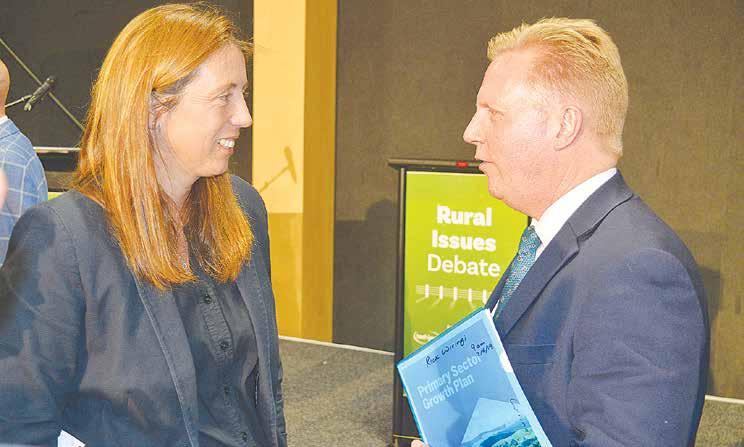
“Approximately 35,000 tuned in to the livestream on the night and there has been plenty of discussion about the debate and the issues raised,” Acland says.
“It was a robust debate on the night and the exchanges between the candidates certainly didn’t disappoint those in the audience and watching.”
Acland says B+LNZ was pleased to see the commitment from National’s Todd McClay to a review of the methane targets and to look at measuring and report emissions based on warming impact.
“This was timely as it follows the release of the ground-breaking methane report by B+LNZ, Federated Farmers and DairyNZ,” she explained.
“This showed the current reduction targets could see methane offset all of the expected additional warming from carbon dioxide and
nitrous oxide from the entire New Zealand economy.”
Feds national president Wayne Langford noted that that all the significant political parties recognised the importance of the rural vote.
“None of the speakers held back in their views and the crowd took it very seriously, due to the state of the primary sector at the moment.”
Langford says he thought all the speakers raised good points and represented their parties well.
Debate convener and
Working in and around vehicles is a leading cause of serious, and fatal injuries on farms. And with farmers over 55 being the most affected group - it’s not about experience.
It’s time our whole community steps up, to set a new standard... for ourselves, and for everyone we work alongside and care about.
SIGN THE PLEDGE, AND JOIN THE CHANGE.
AT farmwithoutharm.org.nz
McClay agreed with O’Connor and said that the minister could do nothing about prices farmers receive.
But he added that the Government is responsible for the extra costs imposed on the farming sector through its many rules and regulations. McClay says National aims to put trust back into farmers.
“They care about the land and they want to do well, but don’t force rules them that incur extra costs,” he told the audience.
“When you have to make rules, make good ones.”
journalist Heather du Plessis-Allan started by going through Fed’s latest farmer confidence survey. She asked O’Connor if he knew the Government was to blame for the high level of input prices and the record low level of confidence in the farming sector. The Labour MP didn’t take the question well.
“If you take this oneeyed view then there won’t be helpful discussions tonight,” he said. “If you hadn’t been awake, you wouldn’t have noticed Covid put a bit of pressure on the way
we run farms and the Ukraine war has caused high inflation.”
O’Connor noted that since Labour got into government, all farmer confidence surveys have produced a negative result despite a $9/kgMS milk payout and $12/kg price for lamb in recent years.
“Farmers always react negatively to some of the things that need to be carried through: no one likes change, I absolutely get it.
“But don’t blame us because international commodity prices take
Hoggard says ACT had a range of policies around farming and he hopes some of them would be adapted in any governing agreement with National.
“The outcome of our policies is to make farmers enjoy farming again.”

Patterson questioned why Climate Change Minister James Shaw had opted out of the debate and instead attended a finance debate in Queenstown.
“He should have been here, discussing how money is made and not how it is spent.”
Sage defended Shaw, saying it was the season for political debates and “we can’t be everywhere”.
ing at reducing its board size, eight years after he successfully co-sponsored a motion to farmer shareholders.
Gent, who served on the Fonterra board for 10 years, backs the plan to reduce the board size from 11 to nine – with six
appointed directors.
“Big boards just don’t work, it’s that simple,” Gent told Rural News “I’ve been on them.”
eight-member board is ideal for the co-operative.
“But it’s a co-operative and there’s a function back to farmers, so
At least they are doing it.”
At the 2015 annual meeting, Gent and another former director Colin Armer introduced a remit to reduce the board size to nine. The motion was passed by 55% of farmers who voted. However, it failed to reach the 75% threshold required to trigger a change in Fonterra’s constitution.
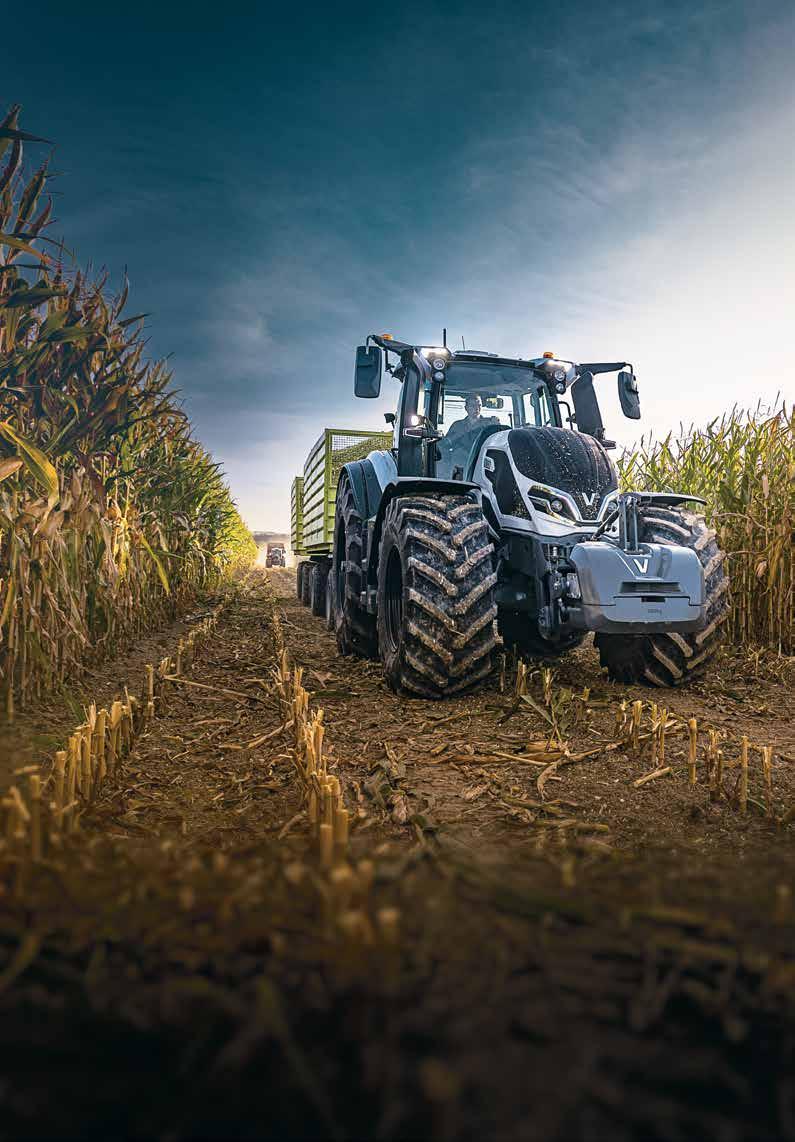
After the AGM in 2015, the then Fonterra board decided not to act on the remit. Current chair Peter McBride says the proposal to reduce the size of the co-operative’s board has unanimous support from sitting directors.
McBride says the board will reduce from 11 to 9 only if farmer shareholders give the green light at the co-operative’s annual general meeting later this year.
“At the end of the day, farmers will decide, and we will respect their decision,” he told Rural News
However, McBride doesn’t expect too much opposition to the pro-
A media report recently named appointed director Clinton Dines and farmer director Leonie Guiney as one of the directors who could be forced to leave next year to allow for a ninemember board.
But McBride says nothing will happen until farmer shareholders approve the proposal. Fonterra directors will discuss the proposal with farmers during a round of shareholder meetings planned for later this
Fonterra directors retire by rotation; next year McBride and Guiney, who both joined the board in 2018, come up for re-election. Guiney had previously served on the board between 2014 and 2017. Fonterra’s charter states that a director should not serve more than nine years “unless the board considers that special circumstances exist to warrant an extended tenure”.
Guiney, a South Canterbury farmer, supports reducing the board size.
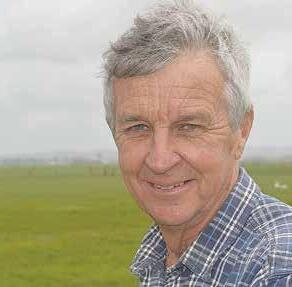
“It’s future focused and will help ensure board dynamics are optimised to best serve our farmer owners,” Guiney says.
She says the recent media story implied “dysfunction in the Fonterra board, which is simply not the case today”.
“Since my re-election to the board of Fonterra, I have experienced a culture that encourages constructive dissent and where all directors’ contributions are welcomed and respected.
“More importantly, the result is better outcomes for Fonterra.”
The Fonterra board says the co-op’s priorities for the coming years could be more efficiently delivered by a smaller board.
“My personal experience, leading or being part of leadership groups, is that in smaller groups people are more engaged and able to share their perspectives in a more meaningful way,” says McBride.
TROUBLED MILK processor Synlait has been dealt another blow with cornerstone stakeholder a2 Milk Company (a2MC) giving notice to pull the plug on an exclusive manufacturing deal.
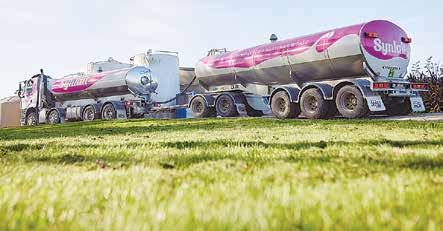
Synlait’s share price plunged 10% on the news and was last week trading around $1.16/share, an all-time low. The listed company’s shares stopped trading on the NZ Stock Exchange last week, while the company mulled a2MC’s notice to cancel the exclusivity arrangements under the Nutritional Powders Manufacturing and Supply Agreement (NPMSA) for a2 Platinum and other nutritional products.
a2MC says it issued
the notice “due to Synlait’s delivery in full and on-time performance (DIFOT) during FY23 falling below the level required for Synlait to maintain such exclusive rights”.
The trading halt was lifted after Synlait told the market that it disputes a2MC’s right to cancel the exclusivity arrangements.
Under the agree-

ment, the dispute resolution process involves a 20-business day period of good faith negotiation between Synlait and a2MC; if unresolved it goes to arbitration.
a2MC expects that any such dispute resolution process may take some time to complete.
In the meantime, a2MC has advised Synlait that it will agree to maintain Synlait’s exclu-
sivity until any dispute is resolved. It hasn’t ruled out fully sourcing products from Synlait, even after the dispute is resolved, but has also hinted at shifting some production to its subsidiary Mataura Valley Milk.
“Subject to the outcome of any dispute resolution process, removal of Synlait’s exclusivity will provide a2MC with the option to produce
SYNLAIT LAST week also announced a new bank refinancing plan.
Synlait’s new banking syndicate members – ANZ, Bank of China, China Construction Bank, HSBC, and Rabobank – have agreed to a new funding arrangement.
Synlait has a working capital facility of $240 million, maturing October 1 next year, together with a $10 million on-demand bilateral facility. This facility is a seasonal facility where the facility limit changes several times during the term of the facility.
a2 Platinum (being the brand of a2MC’s current English label product) at any facility in the future, including Mataura Valley Milk (MVM),” says a2MC.
“MVM is a purposebuilt dairy nutritionals facility situated in New Zealand’s South Island and of which the company owns 75% in partnership with China Animal Husbandry Group
– which owns 25%.
“Having regard to the dispute resolution process, product development cycles and the New Zealand dairy season, any positive impact of the removal of Synlait’s exclusivity on MVM utilisation and profitability is not expected to have a material impact in FY24 or FY25.”
The first signs of a
rift between Synlait and a2MC, which holds a 19% stake in the company, surfaced in May this year, when a month after announcing a net profit after tax (NPAT) guidance of between $15 and $25 million for the 2023 financial year, Synlait issued a new NPAT guidance of a net loss of $5m to a net profit of $5m and pointed the finger at a2MC.
Synlait claimed further demand reduction from one of its infant formula customers wiped off $16.5m from its NPAT. The remainder of the NPAT impact of $3.5m is attributed to higher financing and supply chain costs.
But a2 Milk Company said back then that it was surprised at the extent of the reduction in Synlait’s guidance range.
We believe in investing back into the communities we grew up in. Which is why you’ll find FMG supporting rural people and organisations all over New Zealand. Like at the Little River Pumpkin Festival on the Banks Peninsula, at the Flemington Mud Run in the Central Hawkes Bay, or at the FMG Young Farmer of the Year contest. It’s all about getting in behind rural New Zealand to keep moving ahead.
We’re here for the good of the country.

concern over many months.



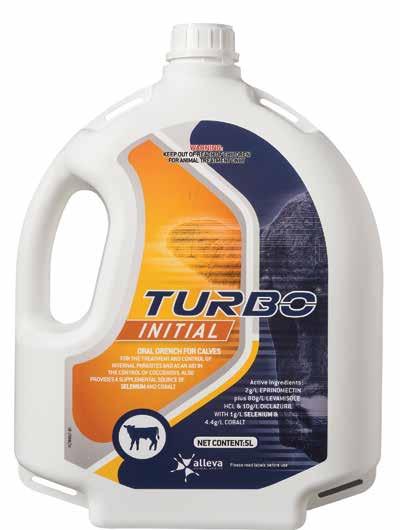
RELOCATION FUNDING is now available through Te Whatu Ora to support the recruitment of international general practitioners applying to work in rural primary care practices.
The relocation fund initiative opened on September 1 and closes on June 30, 2024. The funding is available to support internationally recruited GPs who take up a new position and/ or sign an employment agreement with an eligible rural primary care practice between 1 September 2023 to 30 June 2024.
Hauora Taiwhenua chief executive Dr Grant Davidson says the announcement is welcome news for all rural general practices. He adds that being able to attract and recruit international GPs has long been a challenge for underresourced practices in such a competitive market.

“Offering up to $20,000 (plus
PAYE and 1.53% ACC Levy) paid in two lump sums over a two-year bonding period for each eligible internationally recruited GP into an eligible rural primary care practice. This funding initiative is a real and tangible boost to the sector,” he says.
“We know that our rural practices, many of which are reaching burn-out, will be most thankful.”
Davidson says Hauora Taiwhenua had previously discussed and advocated for such an initiative for rural general practices with Te Whatu Ora. He adds that heavily incentivised recruitment campaigns in other countries, particularly Australia, had been a
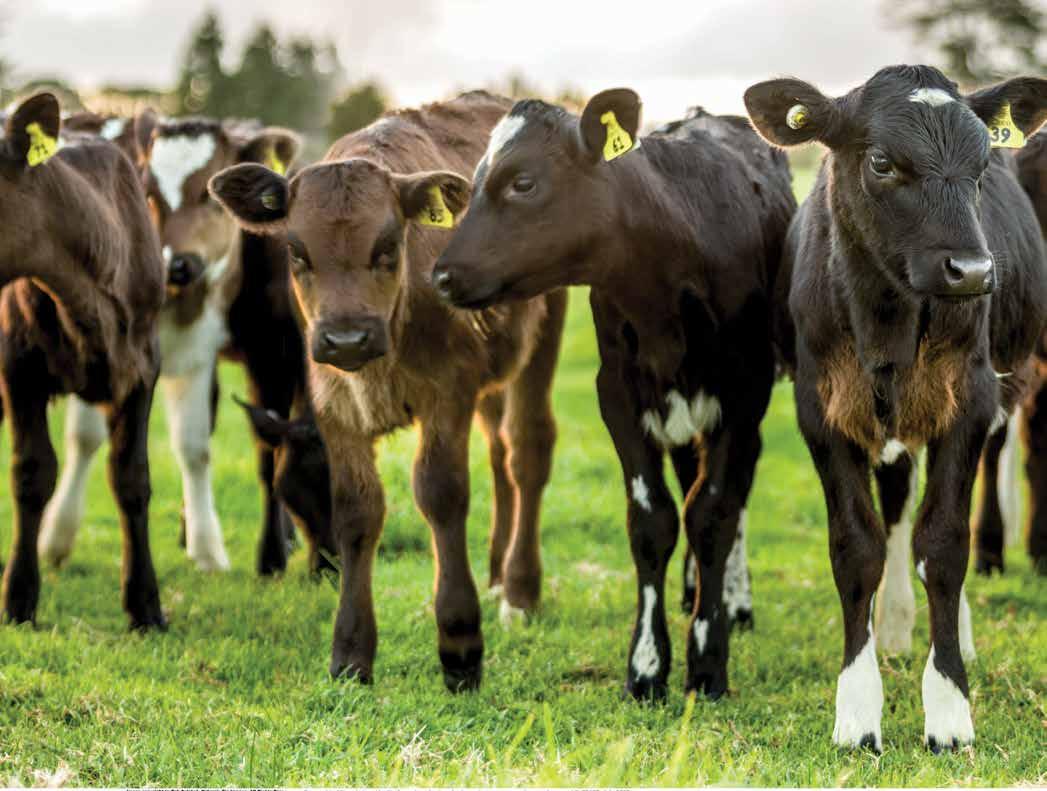
“This incentive really is an encouraging acknowledgement that the Government is willing to invest in the success of our campaigns to attract, recruit and retain rural GPs while we work to train our own sustainable, highly skilled, multi-disciplinary rural health workforce,” Davidson says. “We are grateful to the management at Te Whatu Ora who were open to listening to our concerns and acting on them.”
Te Whatu Ora is encouraging any rural primary care practice looking to recruit an international GP to visit its website for more information on how to access the funding and eligibility criteria.
More information is also available on Hauora Taiwhenua’s website at: https://www.tewhatuora.govt.nz/ for-the-health-sector/overseas-doctors/ relocation-funding-to-support-the-international-recruitment-of-rural-generalpractitioners/
“We know that our rural practices, many of which are reaching burn-out, will be most thankful.”
WINSTON PETERS has castigated Fonterra for its performance in China and believes there could be more value added to the agriculture sector.
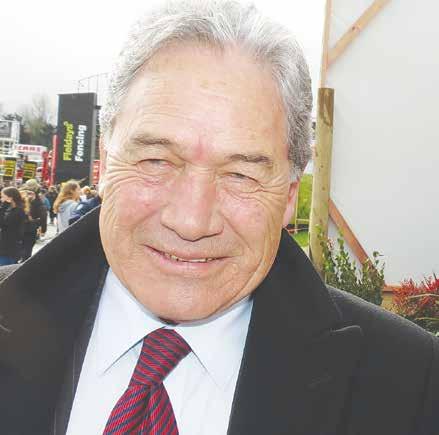
Peters, who is trying to get back into Parliament after NZ First were thrown out in 2020 after forming a coalition with Labour in 2017, made these claims in a recent election special interview with Country TV.
The former deputy prime minister claimed that because both he and his New Zealand First party colleague Shane Jones ‘came from dairy farming backgrounds’ they understood how critical the sector is to the economy.
“There could be much better value add,” Peters told Country TV.
He said that added value could be maximised, “in the interests of our workers, and our businesses and our economy”.
Peters also claimed that Fonterra’s move to sell infant powder to China is not a smart one.
“Why aren’t we leading the infant formula sales around the world?
All the things you see in Scandinavia or Switzerland and, dare I say it, in places like Singapore, all those added value things, we should have been doing.”
Peters puts some of the blame for this on the industry itself.
“We’ve made some serious mistakes and I’ve always been to Federated Farmers meetings and said ‘Look, Gentlemen and Ladies, I don’t understand what you’ve done to your industry.”
Peters went on to claim that Fonterra almost went broke!
“How could it go broke on a speculative
deal in China?”
This was seemingly in reference to the co-operative’s deals in China.
In 2021, it was
reported Fonterra’s balance sheet would take an $880 million hit after divesting its China farms and joint venture farms
in the region, as well as reducing its shareholding in Beingmate.
The sale of Fonterra’s Ying and Yutian Farm was completed in April of that year for $552m and the subsequent sale of the Falcon China Farms joint venture was completed two months later for $88m, bringing in a $360m loss on investment.
However, the co-operative’s investment in Beingmate was worse for its shareholders.
Back in March 2015, Fonterra paid $756m for an 18.8% stake in the infant formula maker but its share value has tumbled since the end of that year, forcing Fonterra to book sizeable writedowns.
According to Northington Partners, Beingmate shares sold over the course of 2020
and 2021 fetched the co-op $273m, resulting in an investment loss of $519m over a six-year holding period.
Peters says Fonterra had to be ‘saved’ by the farming community.
“All of this has been a massive cost,” he claimed. “They got fooled, they got flummoxed, and they made a big mistake.”
Peters also added that representatives of the farming community need to “stand up as well and start owning up to the mistakes they’ve made, and decisions they could have made much more cleverly”.

• See the full story on Country TV, on Sky channel 81, or watch FREE of charge on demand at www.countrytv.co.nz
@rural_news



facebook.com/ruralnews

Major players in the primary sector are mobilising ahead of predictions that the country is about to be hit by potentially one of the country’s worst droughts. Peter Burke reports….

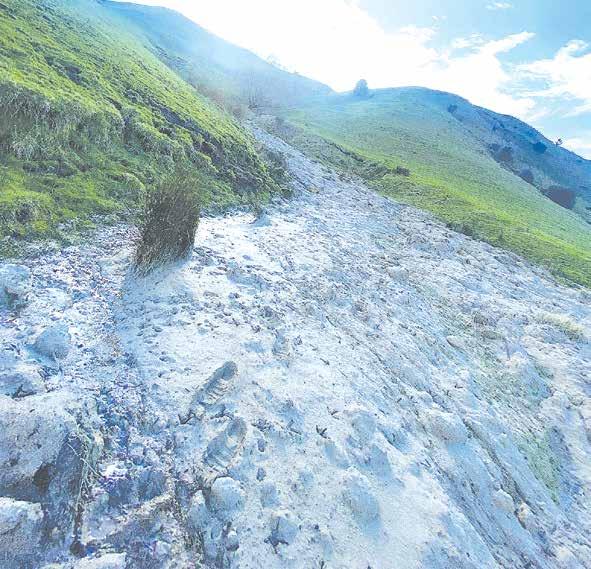
AGFIRST CONSUL-
TANT Lochie MacGillivray, based in Hawke’s Bay, is spending a lot of his time looking at mechanisms farmers along the East Coast can use to manage a drought.
MacGillivray says some of the budgets he’s seen have a ‘lot of red ink’.
“This is because of lower commodity prices, on top of the cost of repairing damage on their farms caused by Cyclone Gabrielle and subsequent rain events.”
He adds that there are massive problems
in northern Hawke’s Bay with infrastructure damage, some of which has been repaired, but in other cases not. MacGillivray says the temporary repairs will need to be fixed permanently at some stage.
“The hills are still moving, making it impossible to repair fences, which is leading to large mobs of sheep instead of the normal smaller ones,” he told Rural News. “The other problem, which would normally be good news, is that the lambing percentage on many farms is very good with

lots of triplets and survivability is high.”
MacGillivray says at the moment, stock are probably not worth as much as they normally would be.
“With low returns and walking into a windy, dry period it’s going to get tough,” he warns.
“The biggest issue is the added stress that this will put on farmers. They have come out of a horrible wet winter and are having a bit of reprieve, but it’s drier under now and changing very quickly – so no wonder the financials are poor.”
BEEF+LAMB NZ is busy running a series of events and webinars aimed at ensuring farm profitability in the light of the impending drought.
Justine Kidd, B+LNZ’s general manager of extension, told Rural News that she’s talked with the other primary sector organisations to ensure consistent messaging and avoid duplication of work.

Kidd says they are analysing rural community needs and the challenges they could face in the next six to twelve months to get a handle on what support they need.
She adds that poor fencing allowing stock to wander onto roads and other properties is a problem
that could take some time to fix. She says with slips and sediment on farm, feed supplies are low and the cost
of getting stock in and out is higher because of the state of the roads.
B+LNZ is running webinars every Monday evening with guest presenters talking about ways to best deal with a drought and with other problems on farm.
Kidd says she’s especially concerned about the well-being of people given what they have gone through and what they are potentially facing.
“It is very hard to tell this story,” she told Rural News. “But it is important to keep it in front of people because of its complexity, and the people who are having to deal with what’s going on are very isolated.”
MacGillivray and the team at AgFirst are looking at getting plans in place early to deal with the drought when it arrives.
He’s experienced these in the past and says farmers who plan well in advance and effec-



tively micro-manage the plan cope well with the drought.
He adds that one farming couple set up a whiteboard and put all the decisions they had to make on this and set trigger points when these needed to be made.


“They had gazillions of decisions and in the end, it wasn’t so much the big ones that mattered, but the smaller ones which added up to the big ones,” MacGillivray told Rural News
“Another farmer I know also had a white-

board up and every day at lunchtime he updated it, and he came through the drought better than most.”
MacGillivray says farmers should look for support and get outsiders in to help review their plans.

NATIONWIDE AGRICULTURAL consultancy firm
AgFirst has taken the initiative early on to have plans in place and tools available to help farmers.



Chief executive James Allen says forewarned is forearmed and he and his staff have been discussing ways to plan for what might happen. He says they are preparing regional models because they know that one solution will not fit all farmers.
Allan says for some, growing crops will be an option but for others collecting grass silage is the answer.
“Different farms have different systems, the climates are different and there are huge numbers of variables on farms even within the same region,” he explains.
“We realise that having just come through some terrible rain events, probably the last thing that farmers want to do is think about drought, but the science is telling us to be prepared.”
Allen says ideally every farmer should have a feed plan or a FARMAX plan, so they know exactly what their feed situation is – to help the decision-making process.
He adds that AgFirst is working with the other primary sector organisations to get a flow of clear and consistent messages out to farmers to avoid confusion and duplication of effort.
A key player in the drought situation is MPI with its links to government when help is needed.
John Roche heads up MPI’s On Farm Support team, which has staff in most regions around the country.
Roche has been in contact with all the other groups involved – including NIWA, B+LNZ, DairyNZ and AgFirst – to make sure they don’t duplicate the efforts of these organisations. He says his staff are also reaching out to farmers to assess their needs.
Roche says On Farm Support will play a ‘coordinating’ role to help ensure there is consistent messaging to farmers. MPI has already worked closely with NIWA and is updating its resource information that will be available to farmers.
“In the past, we have stepped in and advised farmers when they are in the middle of a drought, this time round we want to proactively manage the situation even before it gets dry,” he says.
Roche adds that MPI will be closely monitoring the situation as it evolves and will put extra staff into regions which need the most help.
FEDERATED FARMERS has set out what it calls its rural roadmap that it wants the next government to implement.
The farmer lobby’s policy platform for the 2023 election highlights
12 key policy changes it wants put into action.
Feds says for the past five years, farmers have been living through a period of unprecedented regulatory change.
“A swathe of new requirements for improving water quality, biodiversity and the climate have taken a real toll on the wellbeing of our rural communities,” Feds president Wayne Langford says.
“The intent of these regulations may have been good, but the reality of the execution and implementation has been nothing short of disas-
trous for our farmers. The end result is a long list of highly prescriptive and unworkable rules that tie us up in red tape and heap on unnecessary
costs.”
Langford says NZ farmers have a great story to tell when it comes to their economic contribution – such as the jobs
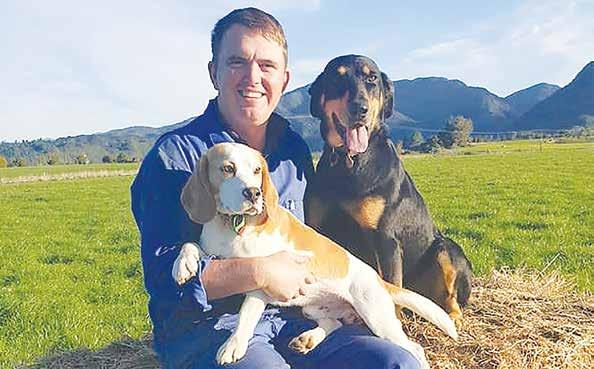
Proudly New Zealand’s only 100% farmer-owned red meat co-operative.
Join Alliance Group Chair Murray Taggart, CEO Willie Wiese, and members of the team for an update on the performance of your co-operative. While 2023 has been challenging, we see opportunities ahead and look forward to sharing these.
Farmers who would like to learn more about the co-operative are welcome to attend.
they create and the work they do to improve environmental outcomes.”
But he point out that current farmer confidence is at record lows and his organisation is
determined to turn this around by bringing real solutions to the table.
“This election we’re being very clear about what needs to be done to restore farmer con-
fidence, support thriving rural communities, improve environmental outcomes and unlock the potential of our primary sector,” Langford says.
“The best thing about
our policy priorities is that they won’t cost the taxpayer a dollar. We’re just asking for the new government to get the settings right, so farmers have the confidence to invest, grow, and get on with what they do best –farming.”
“A swathe of new requirements for improving water quality, biodiversity and the climate have taken a real toll on the wellbeing of our rural communities.”
AN INCOMING National government will abolish resource consents for building water storage on farmland.
Announcing another tranche of its agriculture policy in Canterbury last week, leader Christopher Luxon says National’s plan for the primary sector would unleash investment in water storage and food production to lift productivity.
“Farming is how New Zealand pays its way in the world, with the primary sector earning more than three-quarters of export revenue from goods,” Luxon says. “National will continue to support the primary sector and get Wellington out of farming.”
He says red tape is prohibiting food production and his party wants to make water storage on farmland a permitted activity through National Environmental Standards – meaning farmers won’t
need resource consent for larger storage schemes. The party will also ensure that councils have to approve other types of water storage within two years of an application.
Federated Farmers has welcomed National’s proposed changes to water storage rules. Feds freshwater spokesman Colin Hurst says National’s plan on water storage is “exactly what farmers have been crying out for”.
Hurst says under current regulations it is near impossible to get any new water storage off the ground.
“It makes a lot of sense to support more water capture and storage to help even out those peaks and troughs. There are so many benefits to this kind of infrastructure.”
Hurst says there is no shortage of water in New Zealand and water storage has a critical role to play when it comes to climate change resilience in rural communities.
“There will be other benefits too like supporting land use change and increased production.”
Irrigation NZ describes the policy as good progress and a step toward developing a country-wide strategic approach to water resilience.
“The National Party policy for primary sector growth will encourage investment in on-farm

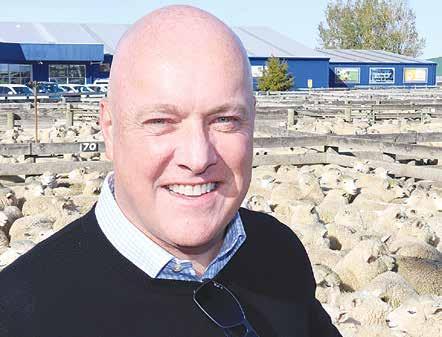
GREEN PARTY co-leader James Shaw doesn’t believe the He Waka Eke Noa (HWEN) Climate Action Partnership proposal will work.
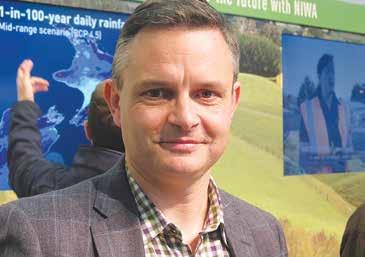
Speaking on Country TV’s election special, the Minister for Climate Change said he had a ‘problem’ with the HWEN proposal because he didn’t believe it will work.
“I think it will, actually, just impose an additional cost without achieving the result and so, I’ve been reasonably vocal about that,” he explained.
“It’s also a massively bureaucratic proposal. It relies on ministers making decisions on both the supply side and the demand side – so they set the price of the levy and they also set the price for the rewards that you get.”
Meanwhile, Shaw claimed there were myths being spread surrounding the issue of the Emissions Trading Scheme (ETS). However, he did concede that the ETS represents an additional tax. His comments come just a couple of weeks after sector leaders labelled the Government’s emission plan ‘tone-deaf’.
“I think there are some myths
that I’d like to bust. People will say ‘Well, why are you just focusing on farmers? Why isn’t anyone else being asked to do anything about it?’”
But Shaw said that currently agriculture was the only sector that does not face a price on emissions.
“I understand, with all of the other things that are going on and the uncertainty about what that policy decision will be, that that’s anxiety-inducing for people.”
Despite the anxiety surrounding the policy, Shaw claimed he had still seen some positive reac-
water storage,” says Vanessa Winning, IrrigationNZ chief executive. “While still protecting important environmental assets, it will insist on quicker consenting decisions for off-farm water storage, and will lengthen consent durations to 30 years.”
Meanwhile, National is also promising to double the number of workers available under seasonal
worker immigration settings. In a statement, the party promised to double the number of workers under the Recog-
nised Seasonal Employer (RSE) scheme to 38,000 a year over five years and change settings to allow more flexibility on the number of hours worked.
Currently, employers have to give RSE workers 30 hours minimum per week, but National would allow these 30 hours to be averaged across their contracted period. Other changes included shifting the maximum age for working holiday visas to New Zealand from 30 to 35.
Luxon says National will also make vegetable growing a permitted activity under the Resource Management Act within one year of taking office.
Vegetables NZ chair
John Murphy says it welcomes National’s announcement and supports any move to increase productivity and improve supply.
Murphy says NZ’s vegetable industry needs fitfor-purpose regulations.
“It will allow vegetable operations to thrive, by eliminating hurdles that limit productivity, while at the same time, creating business certainty that will encourage investment.”
He also welcomed the National Party’s commitments to make it easier to expand water storage and increase numbers under the Recognised Seasonal Employer (RSE) scheme.
@rural_news facebook.com/ruralnews
tions to it.
“One thing that I hear a lot from farmers is they say, ‘We’re not opposed to regulations on the environment, but we want something that works, that’s workable’.”
Shaw reckoned that one of the biggest myths that needs busting is the idea that rural communities are specifically being targeted instead of urban and suburban Kiwis.
“Our focus has been almost entirely on the kind of pollution that you see in cities,” he added.
– Jessica MarshallLANDOWNERS ARE missing out on millions of dollars in carbon credits because of the hassle in becoming carbon farmers.
Nelson company CarbonCrop co-founder Nick Butcher says its biggest hurdle was farmer understanding of what’s involved in becoming a carbon farmer and managing their holdings and obligations going forward.
Butcher says his company grew out of discussions at the Nelson Artificial Intelligence Institute in 2020 around the possibility of using AI and satellite imagery to help identify forests that would be eligible for carbon credits.
The system can now
identify eligible growth, “even in the most difficult native forests,” and help verify that carbon is being sequestered to satisfy the Emissions Trading Scheme (ETS) rules.
Butcher says that, beyond the underlying identification system, CarbonCrop now has a package of software to facilitate carbon farming in a way they believe will have value to the carbon farming sector around the world.
“Our goal was to package it up into something that was easy for landholders to get started with, interact with, understand, and then make the best decision for them and their property,” he told Rural News CarbonCrop has no upfront fee but charges a success fee when the customer gets a return.
“Our whole mission was to make it easy for people to choose to be
a carbon farmer. They may still choose not to be but it shouldn’t be because it’s too hard or
too expensive,” Butcher explains.
The company believes there is about 150,000ha
of eligible native forest not yet registered in the ETS. This represents $90 million per year in unrealised carbon credits.
However, CarbonCrop has already facilitated $25 million, paid out under the ETS to more than 300 landowners.
The company has partnered with US-based Planet, which boasts the world’s largest fleet of earth observation satellites, providing the highest frequency satellite data commercially available.
“It’s as close to live monitoring of forests as is possible in the industry, ending the reliance on inconsistent image quality without the need to own their own satellites.”
Butcher says it is
AGRIBUSINESS AND government joint venture AgriZeroNZ has recently invested $4.1 million into a US-based start-up aiming to reduce methane while improving cow health.
Based in Raleigh, North Carolina, Hoofprint Biome was founded by biotech entrepreneurs Drs Kathryn Polkoff and Scott Collins as a spinout from NC State University.
The pair discovered enzymes that naturally reduce rumen methane emissions and saw the potential for delivery of these with probiotics to benefit ruminant agriculture and tackle the climate change.
Ingested as a supplement, the
Hoofprint probiotic aims to reduce enteric methane emissions by over 80% while simultaneously increasing milk and meat yield by over 5%.
AgriZeroNZ is a partnership comprised of MPI and several NZ agribusiness entities such as Fonterra and Rabobank.
It was established in February to accelerate the development of tools and technology to help farmers rapidly reduce emissions and support our climate goals. Shareholders have committed to at least 10 years in the partnership with $165 million to be invested over the first four years.
AgriZeroNZ chief executive Wayne
McNee says that the investment earlier this month will allow it to be involved from an early stage and drive development towards a solution for New Zealand farmers.
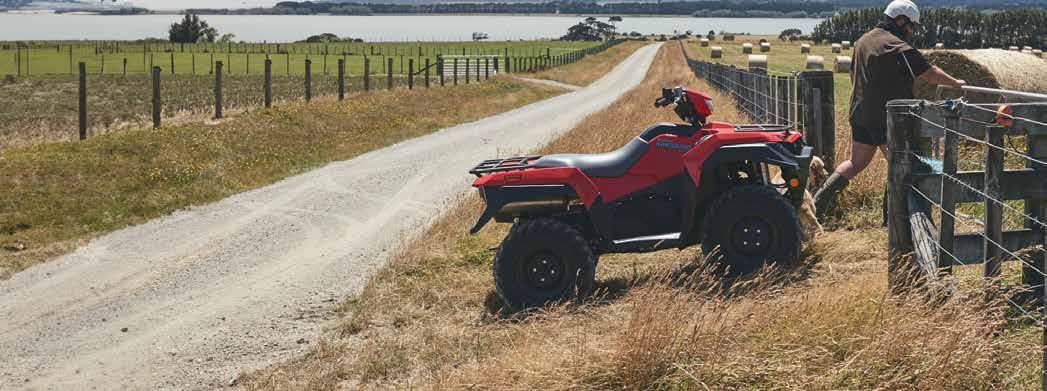
“Hoofprint is developing novel technology with potential to be a real breakthrough to help meet our country’s climate goals,” McNee says.
“We’re looking all over the world for opportunities that will work on New Zealand farms.”
He adds that New Zealand farmers are the most efficient in the world but the importance of reducing agricultural emissions cannot be understated and technology like this needs
to be part of the solution.
Polkoff says Hoofprint is excited to partner with Kiwi farmers develop the solution for Kiwi farmers.
“We’re bringing next-gen probiotics to ruminant agriculture in our mission to cut methane emissions while improving animal health and profitability.”
She says the investment offers a unique opportunity for Hoofprint to tackle the climate crisis together with New Zealand farmers, who have been leaders in sustainable agriculture.
McNee says the investment aligns with the JV’s ambition to ensure all farmers in NZ have equitable access
mainly aimed at farmers rather than foresters because foresters already tend to know about the requirements since carbon credits are already a huge part of their commercial model.
CarbonCrop says it is on a mission to make it simpler for landowners to get paid to protect and restore forests by giving them easy access to carbon markets.

“This delivers stronger farm economics, less carbon in the atmosphere heating up the planet, and improved climate resilience and biodiversity of our landscapes.”
The company recently presented at the Carbon Forestry Conference in Rotorua, where Butcher says they got a lot of interest.
to affordable, effective solutions to reduce emissions. He adds that the goal is to support a 30% reduction by 2030 and enabling development and adoption of solutions to drive towards ‘near zero’ by 2040.
“The Hoofprint probiotic is in early stages but if development continues to progress we look forward to supporting it through New Zealand’s regulatory process and getting it into farmers’ hands.”
This is AgriZeroNZ’s fourth investment since being established in February. – Leo Argent
“Our whole mission was to make it easy for people to choose to be a carbon farmer. They may still choose not to be but it shouldn’t be because it’s too hard or too expensive.”
recent years,” he claimed.
SILVER FERN Farms
chief executive Simon Limmer is leaving the meat company and moving into the wine sector.

Earlier this month, Limmer – previously the chief operating officer of kiwifruit company Zespri – announced that he’s standing down after five and a half years as boss of the meat processor and exporter. Last week it was revealed that Limmer will take up the chief executive role of Indevin Group, New Zealand’s largest wine company and owner of Villa Maria brand. He will take up his new role in early 2024.
SFF chair Rob Hewett says Limmer will stay in his role at SFF during the transition to a new chief executive and remain involved with the company in a strategic role in the future.
“We’re now entering into a formal process to find a replacement for Simon and I expect this will take until 2024,” Hewett added.
In a message to suppliers announcing his move, Limmer says it was time for new energy to take over the role.
“The business is in really good shape. We’ve built really good capability, have a clear direction of travel and produced some very good results in
“Notwithstanding the challenges we currently face. However, these are the economic realities we face and highlights just why our strategy is so important and the right one for us.”
Limmer added that he will stay involved with SFF where he ‘can add value’ and that there would be a long transition – into the new year –before a replacement was named.
Hewett described Limmer’s five and half years at the company as commendable.
“It’s a pretty short length of time when you consider how far the company has come.”
He also acknowledged the challenging times facing the company and farmers at the moment.
“What we are currently facing is tough and unprecedented in many ways, but the strategy we have adopted is validated by this,” Hewett told suppliers.
“What Simon and his team have done over the past five and a half years is ultimately going to stand Silver Fern Farms and our suppliers in good stead.”
He says the company has engaged international and local recruitment agencies in its search for a new chief executive.
“There is a good lot of New Zealanders
employed offshore, as well as some really good talent internally.”
Hewett says wherever the new chief executive comes from, the process will take time and the
company will be regularly updating suppliers on progress.
“I am expecting this will not be completed until early in the new year.”
Successful forage brassica and pasture production is highly dependent on the first six weeks of a plant’s life. Ultrastrike® and Superstrike® seed treatments include insecticides, fungicides and nutrients to maximise seedling establishment, helping to deliver higher yields and improved animal production.
PROTECT YOUR SEED, PROTECT YOUR FUTURE.
For more information, talk to your local seed retailer or visit seedtreatment.co.nz
IF HIGHER PRODUCTION IS YOUR END GOAL… THEN LOOK TO THE START TO ENSURE YOU ACHIEVE IT.
Dairy ATTENTION REMAINS
laser-focussed on both supply and demand from China.
Supply growth is still evident – but showing signs of slowing – while demand remains sluggish.
While the triggers for a rebalancing within the Chinese dairy industry are at play, the severity of the economic headwinds and the length of the

lull in Chinese economic growth are shrouded in uncertainty.
Markets are watching for signs of how New Zealand milk production is shaping up in the run-up to the spring peak flows.
Milk flows for the first two months of the 2023/24 season show production is 1.3% behind on a tonnage basis.
This season will be a
tale of two islands, with the North Island broadly on struggle street thanks to tough weather conditions affecting grass growth, while the South Island is shaping up well ahead of the spring flush.

Beef
AFTER SLIPPING through July, farmgate beef prices started tracking up again in August 2023.
NI bull prices pulled into line with the fiveyear average and followed a more normal seasonal trend, lifting 2.6% between 4 August and 25 August to NZ$5.80/ kg. North Island store prices rose slightly in late
August – R1 Friesian bulls were up 3% to NZ$3.65/ kg for the month – while South Island store prices remained flat for most of August.
With New Zealand bull production declining in line with the normal
seasonal trend, and the price of US imported lean trimmings showing signs of lifting, schedule prices should follow the normal seasonal trend up over the coming months and track close to the fiveyear-average.
Sheepmeat
LAMB PRICES stabilised through August, although they remain at historically low levels. A consistent theme remains soft demand from key markets and full supply chains. The

average price for August (NZ$6.96/kg) was down 25% for the North Island and 26% for the South Island compared to the same period last year. These prices are slightly below farmgate prices in 2020 and are the lowest experienced in the last five years.
However, at NZ$6.95/ kg, lamb prices received here in New Zealand
are higher than those received by farmers in Australia. Lamb production for the season to date (week 45) is down 1%, while mutton production is down 9%.
Sheepmeat exports in July 2023 are down 25% YOY to 26,767 tonnes. Although lower than 2022 volumes, they are more in line with 2021 volumes and represent the
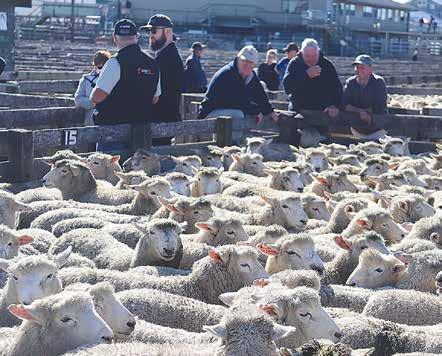
Germinal has a unique understanding of pasture systems. For over 30 years, our plant breeding has been focused on providing farmers with solutions that improve productivity and profitability, while addressing environmental impacts.

Our specialty is driving the most efficient protein conversion into meat and milk. With meticulous research, we have developed cutting-edge grass and clover cultivars that naturally advance the competitive advantage of New Zealand’s grazing system.
Germinal pasture advantage supersedes previous feed measures, utilising digestibility, along with palatability – animals can simply gain more from less.
When production, profit, and footprint matter, ask for Germinal.
low part of the season as volumes bottom in September.
AUGUST WAS the first month since the Russian invasion of Ukraine in February 2022 that all three fertiliser price references showed a positive movement. Nitrogen rose as much as 7.4% MOM but closed at -7%. Phosphate is up a robust 17% and potash is up 1.5%.
The catalyst is strong demand from South America, mainly Brazil. However, this surge is likely to be temporary.

Other markets showing sluggish activity are Europe and North America. Another pressure on nitrogen fertiliser prices comes from natural gas.
So far, the fears of shortages are over. Storage replenishment in Europe is on track to meet winter demand and this is reflected in its spot price. It is 43% lower than in January 2023, and at the same level as in July 2021.
THE NZ dollar fell by almost 3% in August as concerns over the Chinese economy impacted the outlook for commodity exports.
The NZ$ opened the month at 0.6209 before closing the month at just 0.5967, making it one of the worst performing major currencies over the period.
The lower NZ$ could cause some problems for the RBNZ, as a weaker currency makes imports more expensive and therefore causes the

country to start importing inflation from abroad. Rabobank doesn’t expect any further increases to the OCR.
The sharp slowdown in consumption that we are now witnessing, along with an expected softening in the labour market and perhaps a slightly tighter fiscal stance if the National Party wins the October election (as polls currently predict), all point to the RBNZ remaining on hold.
For more information: 0800 171 825
www.germinal.co.nz
PLAN FOR the worst and hope for the best!
This will be the mantra of many farmers up and down the east coast of the country as warnings come of a potential devastating drought hitting this summer.
NIWA’s principal scientist Chris Brandolino warns that weather patterns are emerging that will likely cause the early arrival of El Nino. NIWA is already starting to see dryness develop in parts of the North Island – including Hawke’s Bay and Tairāwhiti, as well on the South Island’s east coast.
“Normally the dryness begins in November, but this year it is likely to kick in early –meaning October.”
For those farming in the Hawke’s Bay and Tairāwhiti regions, already severely damaged by Cyclone Gabrielle, a potential drought is the last thing they need.
Already major players in the primary sector are mobilising staff ahead of NIWA’s predictions that east coast regions are about to be hit by potentially one of the country’s worst droughts.
Beef+Lamb NZ is running a series of events and webinars aimed at ensuring farm profitability in the light of the impending drought. These webinars are running every Monday evening with guest presenters talking about ways to best deal with a drought and with other problems on farm.
B+LNZ’s says it’s talking with the other primary sector organisations to ensure consistent messaging and avoid any duplication of work.
It is good to see that rural organisations are analysing rural community needs and the challenges they may face in the next six to twelve months to get a handle on what support is needed. A key part of this will be monitoring the well-being of people – especially those affected by Gabrielle given what they have gone through – and what they are potentially facing.
The reality is that dealing with the weather – and things like floods and droughts – are part of the ‘uncontrollables’ of farming. However, planning and preparing for various scenarios is what farmers can control.
As they say, to be forewarned is to be forearmed and hopefully farmers are taking the drought warnings seriously and planning for the worst, while hoping for the best.
TO ALL FARMERS, FOR ALL FARMERS
HEAD OFFICE POSTAL ADDRESS: PO Box 331100, Takapuna, Auckland 0740 Phone 09-307 0399

PUBLISHER: Brian Hight Ph 09 307 0399
GENERAL MANAGER:
Adam Fricker Ph 021-842 226
CONSULTING EDITOR: David Anderson Ph 09 307 0399 davida@ruralnews.co.nz
Your old mate wonders if the current chair of DairyNZ, Jim van der Poel, is the very same Jim van der Poel who is now canvassing to retain his directorship of the dairy industry-good body. The Jim van der Poel on the electioneering trail says that farmers shouldn’t be taxed for methane emissions until it is proven that there is actually a problem. Surely this can’t be the same Jim van der Poel – the methane messiah – who has been beating the He Waka eka Noa (HWEN) drum for the past 3 years and demanding that farmers sign on the dotted line and get with the HWEN programme or be thrown into the ETS fire of doom? Dairy levy payers have until October 10 to cast their votes. Will they send a similar message – like their sheep and beef farming colleagues – who voted out their chair earlier this year?
The Hound notes that the Taxpayers’ Union recently revealed that the Ministry for Primary Industries (MPI) spent more than $125,000 for its presence at this year’s Mystery Creek Fieldays. According to the union’s figures, on top of the $20,350.72 MPI paid for its stand at Fieldays, it also coughed up nearly $8,000 to transport 30 staff to the event and another staggering $96,477.09 for ‘display set-ups’. While there is little doubt that MPI should be at Fieldays, it seems highly profligate to be spending $125k in these severely constrained times – especially for the rural sector. Maybe next year MPI can send a few less lanyard wearers to Fieldays, cut back on its pricey stand and better spend taxpayer dollars on reducing red tape and eliminating unnecessary bureaucracy and regulations that currently burden NZ farmers.
PRODUCTION: Dave Ferguson Ph 027 272 5372 davef@ruralnews.co.nz
Becky Williams Ph 021 100 4381 beckyw@ruralnews.co.nz
REPORTERS: Sudesh Kissun Ph 021 963 177 sudeshk@ruralnews.co.nz


Peter Burke Ph 021 224 2184 peterb@ruralnews.co.nz
MACHINERY EDITOR: Mark Daniel Ph 021 906 723 markd@ruralnews.co.nz
A mate of yours truly wonders just exactly how some of the so-called ‘leaders’ in the ag sector will fare if there is a change of Government on Oct 14. He suggests that the cuddling up and appeasement to the current Labour Government by – among others – the selfappointed Farm Leaders Group, DairyNZ, Beef+Lamb NZ and the Primary Sector Council may find it somewhat difficult, after having to wipe the brown stuff from their collective noses, in dealing with a new National-led government. He reckons it might be time for a number of these ‘Benedict Arnolds’ to fall on their swords before their heads are cut off by the farmer groups they have purported to represent and by a less than impressed new administration in power. Food for thought!

AUCKLAND SALES REPRESENTATIVE: Stephen Pollard Ph 021 963 166 stephenp@ruralnews.co.nz
WAIKATO SALES REPRESENTATIVE: Lisa Wise Ph 027 369 9218 lisaw@ruralnews.co.nz
PRINTED BY INKWISE DISTRIBUTED BY REACHMEDIA
You canine crusader wants to tip his hat to Fed Farmers for busting the Government’s dodgy tactics in trying to buy support to rush through its controversial RMA reforms. Feds RMA spokesperson Mark Hooper recently blew the whistle on attempts by the Ministry for the Environment to fund ‘NGO participation in resource management and freshwater reform processes’ to the tune of up to $600,000 each. Hooper says Feds were approached to participate in the scheme to help rush through the reforms just four weeks before the election but turned it down. “This doesn’t pass the sniff test for us at this stage of the political cycle,” Hooper explained. It begs the question of the ethics of the Government forking out hundreds of thousands of dollars, on the eve of the election, to select lobby groups to engage with its proposed policy changes.
WELLINGTON SALES REPRESENTATIVE: Ron Mackay Ph 021 453 914 ronm@ruralnews.co.nz
SOUTH ISLAND SALES REPRESENTATIVE: Kaye Sutherland Ph 021 221 1994 kayes@ruralnews.co.nz
DIGITAL STRATEGIST: Jessica Marshall Ph 021 0232 6446
NZ’s red meat sector says it is committed to playing its part to address climate change, improving our waterways and protecting New Zealand’s biodiversity. However, it wants a future Government to implement these policies in relation to the environment and climate change. Nathan Guy, Meat Industry Association and Kate Acland, Beef+Lamb NZ explain.
NEW ZEALAND sheep and beef farming is built around extensive lowimpact grassland grazing systems.
We are widely recognised as having one of the most environmentally efficient farming systems in the world. The carbon footprint of New Zealand beef and lamb from farm to plate is amongst the lowest in the world.

While the sector is up for the challenge of doing even better, we are asking for some specific changes to policies as the cumulative economic impact of the current poorly crafted rules is crippling.
Climate Change:
• For the Government to report annually on new warming as well as emissions.
• Amend the methane targets to ensure they are aligned with carbon dioxide emissions reductions to achieve no additional warming by 2050.
• Back the He Waka Eke Noa agricultural emissions pricing proposal, ensure agriculture is not included in the ETS and ensure any pricing proposal is equitable and does not threaten the viability of any sector.
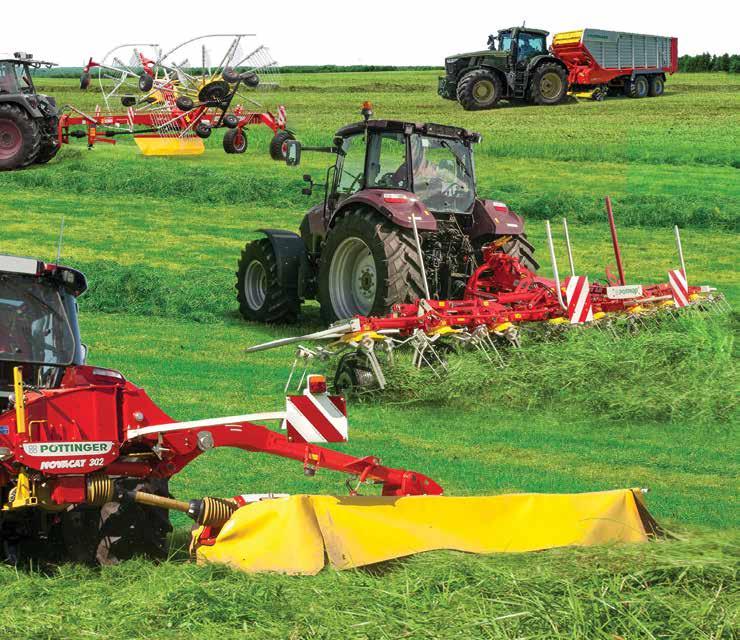

• A cautious approach is taken to pricing, recognising New Zealand is the only country intending to price agricultural emissions, and is among the most carbon efficient producers in the world.
• Recognise and reward farmers for their on-farm sequestration.
• Continue to support industry through investment in climate change mitigation and adaptation research funding.
• Remove the low slope map for stock exclusion and replace it with a more effective general rule designed to accommodate regional differences.
• Defer the introduction of the winter grazing rules until the Government has operationalised freshwater farm plans and amend the slope rule for winter grazing from 10 degrees to 15 degrees.
• Change the thresholds for requiring a freshwater farm plan to ensure the plans are risk and outcomes-based.
• Continue to support the processing sector transition away from coal to renewable energy.
Carbon Farming:
• A combination of policy changes are needed to curb the sale of sheep and beef farms into forestry to offset carbon emissions.
• There needs to be an urgent review of the role of forestry in the Emissions Trading Scheme and specific limits on the amount of offsetting fossil fuel emitters can do. We are not saying zero, but some limits are warranted.
• In the short-term, we must test and implement a range of possible tools such as further limits on foreign investment; some limits on exotics being put into the permanent category of the ETS (to address “carbon only” farming); and additional rules for carbon and plantation forestry at the regional level.
Biodiversity:
• Delay the introduction of the Biodiversity National Policy Statement until the policy settings are right and the final NPSIB supports and encourages good biodiversity outcomes, not additional unnecessary regulation. Policies should ensure that biodiversity is an asset rather than a liability.
• In particular, work with industry to narrow the definition of Significant Natural Areas (SNAs) and provide greater support and recognition for farmers for protecting indigenous biodiversity. Water:
The meat sector is asking any new government for some changes to policies due to the cumulative economic impact of poorly crafted rules on the industry.
South Otago sheep and beef farmer Hamish Bielski questions if the desire to develop and breed low methane emitting sheep may cause other important and valuable traits, that have been developed over many years of sheep breeding in NZ, to be lost. In the following article he explains the risks…
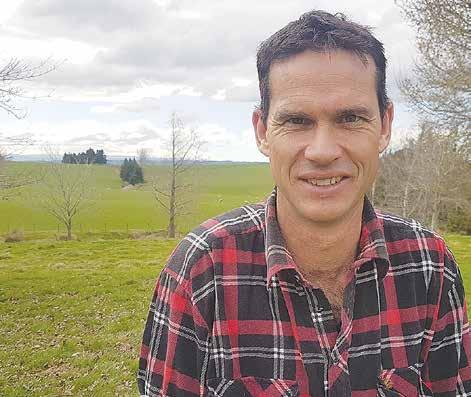
ONE OF the great initiatives from sheep breeders in recent years was the Beef + Lamb Genetics Low Input Trial.
While the trial’s aim was to find productive, efficient sheep that require low inputs, Beef + Lamb Genetics was enthusiastically using the programme to expand methane research.
Research has shown that selecting for a low methane emitting sheep will breed a smaller animal, with a smaller
rumen, that will need to eat more high-quality feed to maintain productivity (Waghorn 2020).
Low methane emissions from sheep also has correlations with higher wool weight and lower ewe body condition scores. This not only adds cost via more work but may even lower efficiency and profit from a smaller, potentially skinnier sheep.
My question to the “low methane” proponent is: Which produc-
tive and low input traits should we compromise?
It has taken decades to breed the most productive sheep in the world. These are all the traits we as farmers have to consider to increase returns on farm. Reproduction and survival mean more live lambs. This influences the annual ewe replacement as a percentage of total lambs born; the number of ewes/ha and of course the number of sale lambs.

Selecting for high
growth means the faster lambs grow, the less feed is required. Meat yield increases carcase weights from a lower liveweight. This improves the sale options to a farmer by creating more flexibility and more value from selling lambs at a lower liveweight.
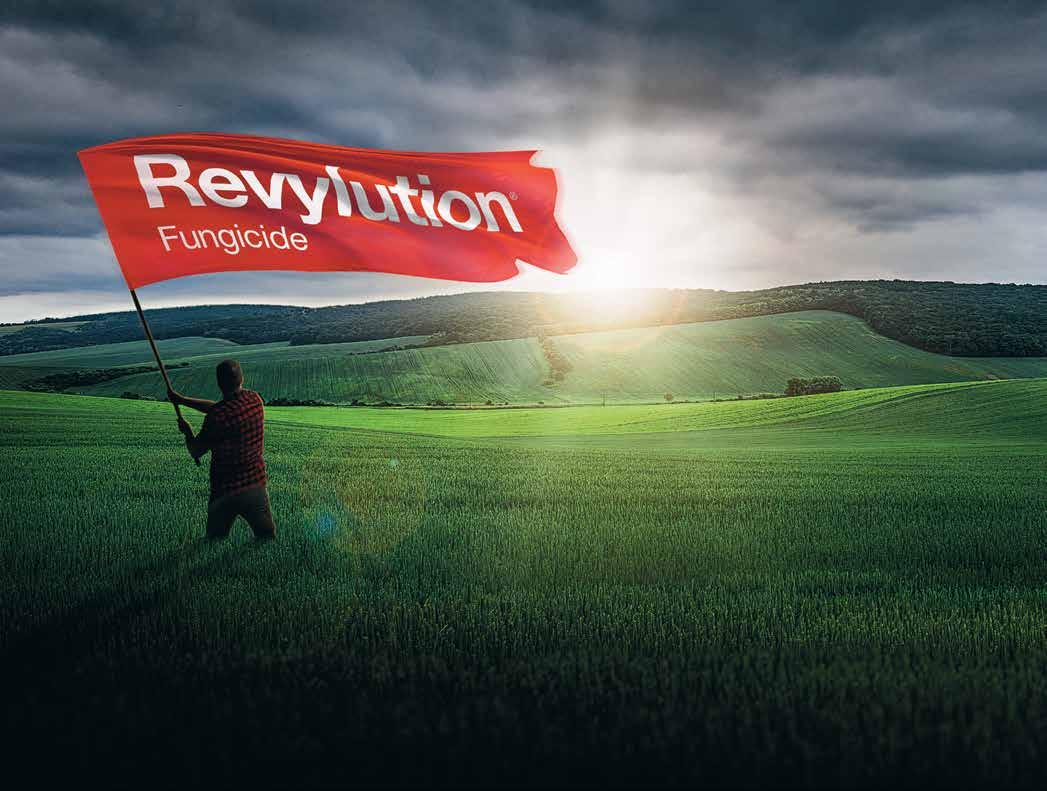
Adult weight and body condition score (BCS). The interaction between these two traits is such that a lower adult size is a liability if it also has a poor BSC. A positive BCS allows the ewe to handle tough seasons, storing ‘energy’ on her back to perform when conditions are favourable. This trait selects animals that can use themselves as a buffer against climate, seasonality of pasture production and their own feed requirements.
Facial eczema challenges can go so far as to mean a dead sheep is neither productive, efficient
nor profitable. Naturally then, in certain areas, this is a trait heavily selected for in flocks.
WormFec/Carla/resilience traits seek to identify those animals that support an immune

What frustrates me immensely is the same one liner rolled out of the same ‘group think’ narrative: “We have to be seen to be doing something.” I find this insulting to all the farmers, breeders, scientists who have gone before and are now breeding and managing NZ’s productive sheep flock.
+Lamb Genetics roll out the ‘gas chambers’ that measure methane production to as many breeders as possible, they name it the “cool sheep programme”. No one would ever entertain the idea if it was named the “skinny sheep project”, which in my view more accurately reflects the possible outcomes.
decision to reject putting their rams in the ‘gas chambers’, because if we all stand together, we paralyse the system. We then can get on breeding
robust, resilient, productive sheep that convert solar energy through pasture into superfood.

As Syd Harris so well puts it, “The greatest enemy of progress is not stagnation, but false progress”.
• Hamish and Amy Bielski
farm 300ha of rolling hill country between Clinton and Balclutha on the banks of the Pomakaka River. Hamish spent 10 years on the Beef and Lamb Southern South Island Farmer Council, with three of those years as the chair.

response to limit or eliminate the reproductive ability of any worms in the gut, or just perform under a worm challenge.
Considering 33% of farms were reported to have triple drench resistance to parasites in 2023 and that bionic capsules are now banned, these are important traits.
Recording and selecting for animals that minimise the production of dags result in lower requirements for fly treatments and crutching over time.

All of these traits minimise production losses in a farm business or they mean less work and they directly influence the profit of a business.
So again, which of these traits do we compromise for methane?
I think, the only way these targeted low methane sheep will be used by farmers is if we are paid to or taxed into submission.
Language is very powerful, so when Beef
The science papers researching methane in NZ sheep are hinged on solving a reported problem that is based on a GWP100 metric that is outdated or overstating the ruminant methane by a factor of 3-4 (IPCC AR6).
What frustrates me immensely is the same one liner rolled out of the same ‘group think’ narrative: “We have to be seen to be doing something.” I find this insulting to all the farmers, breeders and scientists who have gone before and are now breeding and managing NZ’s productive sheep flock.
After reading through research papers on methane, what has not been clearly presented by Beef + Lamb Genetics is the potential negative consequences of methane selection. What has made it worse is our breeders have had the fear tactic cast over them, in that “if they haven’t got rams with methane bvs, farmers won’t be buying rams off them”.
Let’s stand and support our breeders in their
A FULL rebalance of China’s dairy market is not expected in the near future, so dairy farmers in New Zealand and around the world will need to manage through more financial pain in the months ahead.
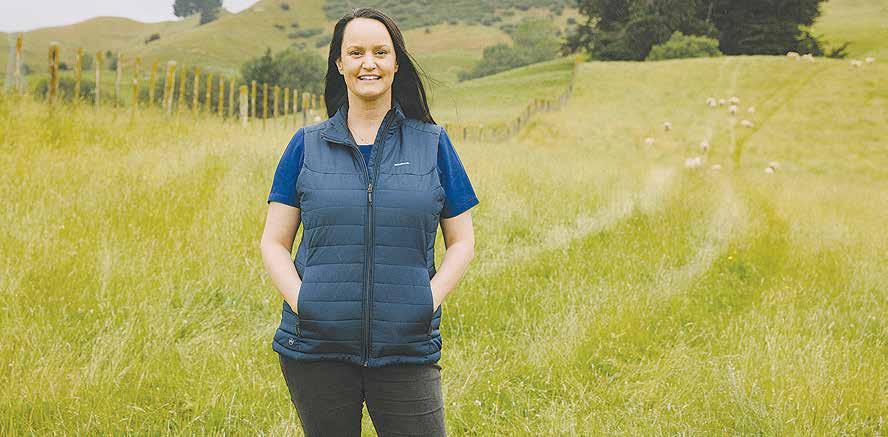
That’s the view in the latest Rabobank Q3 Global Dairy Quarterly report.
However, it says with lower global prices stemming supply growth in key dairy production regions, there is an increasing possibility of a demand resurgence emerging well before milk output can recover – creating a ‘whiplash effect’ in global markets and a bullish run in to 2024.
Co-author and Rabobank senior agricultural analyst Emma Higgins says the severity of the economic headwinds and the duration of the lull in economic growth in China remain uncertain, reducing the likelihood of a strong demand recovery.
A myriad of factors have converged to drive the longed-for dairy demand recovery in

China – the world’s largest dairy importer – even further into the future. Lower demand for dairy imports in China has reduced global dairy prices and production.
“Driven by reductions in most key global regions, milk production from the Big 7 export regions is now anticipated to grow by 0.3% year-on-year in 2023, downgraded from last quarter’s estimate of
0.7%. Into 2024 output is expected to climb by 0.4%, far less than the 1.6% annual average gain from 2010-2020,” Higgins explains.
She says slowing global milk production will eventually match the tepid demand growth noted in most regions, preventing further significant price declines.
While the immediate outlook remains challenging, Higgins
says there is a ray of optimism for the months ahead as the US Class III milk price and the GDT-weighted average price both fell to Covidlevel lows in recent weeks, allowing buyers to replenish stocks at bargain prices.
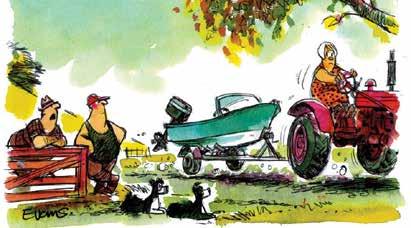
Although the Global Dairy Trade (GDT) index has weakened, demand from China still accounts for roughly 30-40% of sales since Q2 and
demand from Mexicothe second largest dairy importer - has also been robust.
These factors make a demand-led resurgence in global dairy markets in the months ahead a growing possibility.
Higgins says if buyers feel confident prices have hit a low this cycle and flock to buy products en masse, this could create a shortage of milk and increase demand, creating
a whiplash like effect for global dairy prices.
While this may provide some reason for optimism over the coming months, dairy farmers will need to manage through the current financial pain first. Weaker Chinese import demand has seen Rabobank revise its milk price forecast for this season down to NZ$6.75/ kgMS, in line with Fonterra.
Higgins says there are several watch factors for the coming months, which hold both ‘upside’ and ‘downside’ risks for global milk prices. “Chinese import demand remains the most influential of these, so any signals of increased Chinese buying will be monitored closely, especially due to weaker forecasted milk production growth in dairy export regions.”
SHEEP WITH finer wool, greater tolerance for hot weather, top meat quality traits, and lower methane emissions.
That is the vision for Pāmu and its partners who are working on advancing sheep genetics.
Pāmu (Landcorp Farming Ltd), the Ministry for Primary Industries (MPI) and Focus Genetics, a Pamū subsidiary, with support from AgResearch, have joined forces on the ‘Sheep of the Future’ programme.

The programme includes finer wool genetics (20-25 micron) sheep that can be farmed beyond the arid areas that have traditionally been the home for Merinos. It also aims for advances in strong wool breeds to increase disease tolerance, low-input traits to make farming less costly, continued breeding selection for animal growth and meat quality traits, and for rumen function with lower levels of methane emission.
The seven-year initiative aims to transform NZ’s sheep-based production systems.
Programme manager Natalie Pickering, from Focus Genetics, says climate change is likely to have a marked impact on NZ farms producing wool and red meat.
“Genetics provides an opportunity to select animals that are better adapted to the changing environment through disease and heat tolerance
while maintaining productive performance and lowering emissions.”
The project, partially funded through the Sustainable Food and Fibre Futures fund, is expected to run until 2029. The collaboration will see an injection of $10.5 million – which will enable benchmarking, breed comparisons, research on new traits and breeding programmes to develop fine-wool and no-wool sheep in New Zealand.
At Pāmu’s Aratiatia farm, near Taupō, the team is working with a fine-wool breeding flock alongside a control Romney line. Measurements for production, reproduction, survival, disease and fine-wool
attributes are being conducted, along with environmental assessments.
The objective is to identify fine-wool attributes suitable for a temperate environment.
“Working with Dr Tricia Johnson, team leader animal genomics at AgResearch, we saw an opportunity to generate a resource to enable us to investigate the genetic variation in the no-wool
and fine-wool breeds,” Pickering explains.
“AgResearch has done great work on methane, residual feed intake and genomic selection for the New Zealand sheep industry and we can leverage this work.”
The programme also includes a feasibility study led by AgResearch’s Dr Kathryn McRae, who will explore immune competence in New Zea-
land sheep. Immune competence is the ability of the animal to mount a healthy immune response following exposure to bacterial or viral infection.
The study aims to define a measurement tool for immune competence that can be incorporated into breeding programmes.
Another part of the project includes produc-
• For Water Storage Tanks
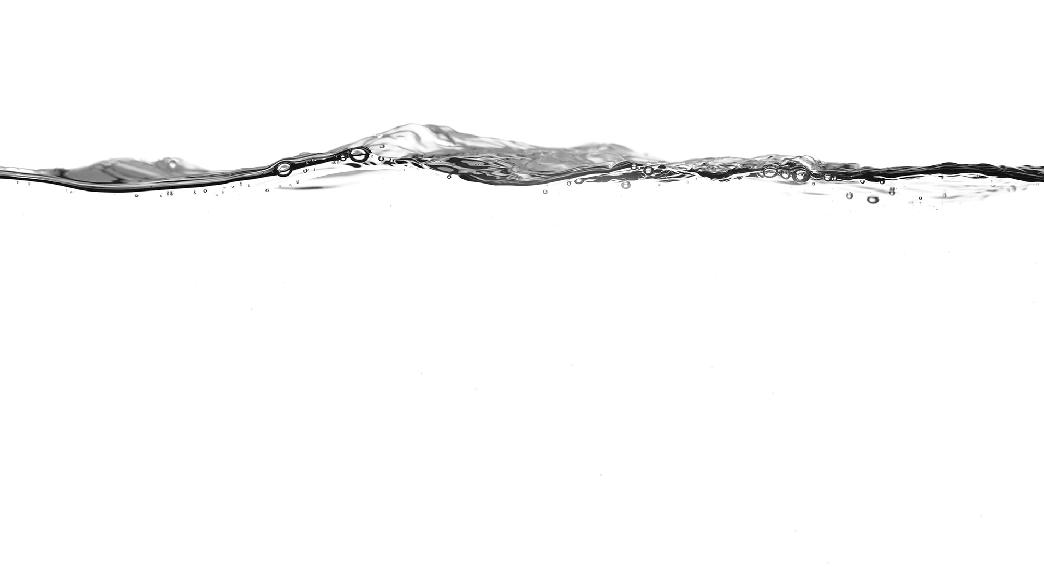
• Adjustable levels from 50mm-2.5m
• Minimises pump operation
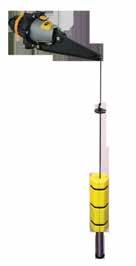
•Available in 20/25/32/50mm
ing sheep for sub-tropical areas with a focus on meat production. The team has established a no-wool breeding flock at Pāmu’s Kapiro farm in Kerikeri. There is also a control Romney line to capture data on traits around production, reproduction, survival, disease and no-wool attributes. Researchers will also take emissionsrelated environmental measurements – including residual feed intake and methane outputs. This work stream will result in the development of a method for measuring heat tolerance, which will be a crucial trait as our weather becomes more extreme.
Pāmu’s Jim Inglis
says putting the project together has taken three years of planning and preparation to be able to develop novel traits for the benefit of all breeders in New Zealand.
“The fine-wool flocks at Aratiatia and the nowool breeding programmes at Kapiro have now undergone multiple mating cycles. We have good relationships with breeders across New Zealand and internationally which have facilitated their establishment.”
Inglis adds that various breeds have been integrated into the programmes, adding genetic diversity and expanding the scope of the research.
The data generated from this work will flow through New Zealand’s national sheep evaluation programme NProve, managed by Beef+Lamb NZ, and will be available to all farmers.
Inglis claims that the traits measured will also be valuable for strong wool breeders looking to make strong wool farming more profitable and sustainable, and that the team are looking forward to holding open days to discuss the work being done, and how it will fit into farm system changes.
“The programme demonstrates the collective effort of industry stakeholders and researchers committed to shaping the future of sheep-based production systems in New Zealand,” he says.
• Stainless steel bracket and Shaft


• Fits plastic and concrete tanks

• Rugged and long lasting
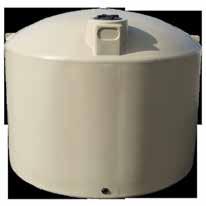
“The fine-wool flocks at Aratiatia and the nowool breeding programmes at Kapiro have now undergone multiple mating cycles. We have good relationships with breeders across New Zealand and internationally which have facilitated their establishment.”
than areas that received no periodic shading at all.
A WAIPARA farmer planning to have 200ha of his property converted to an “Agri-voltaic” solar power plant says it represents a secure, 30-year diverse income stream for his business.
Landowner Tom Kidner says the opportunity to diversify farm income, as well as making a positive contribution to helping the country reach its emissions-reductions targets, are his key motivations.
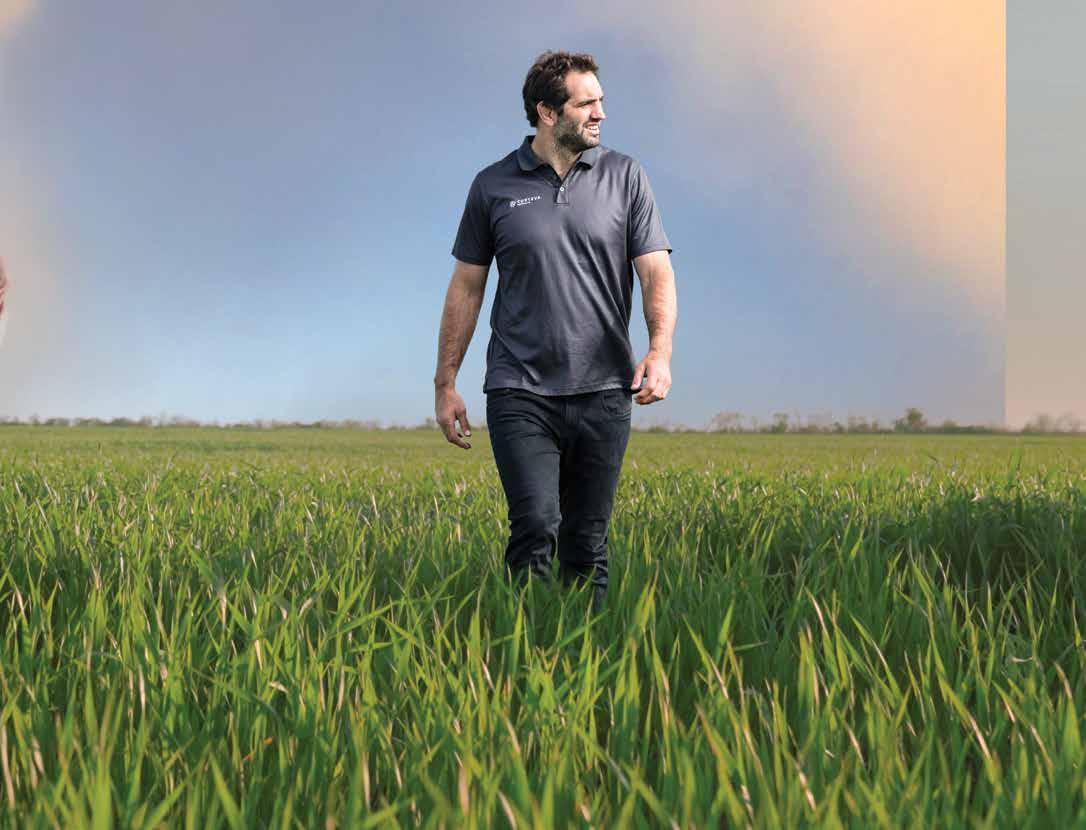
Kidner told Rural News his farm is known to the locals as being among the driest in North Canterbury and has no possibility of irrigation. But he says a recent Massey University study found the areas between the rows of solar panels produced nearly 40% more grass
Kidner says the photovoltaic solar panels will be installed in such a way as to allow him to continue to run 80% of his sheep and lamb business under and between the rows.
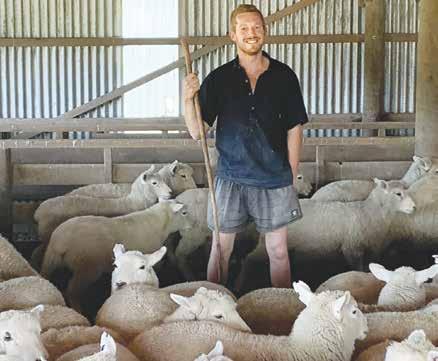
“With climate change predicted to make droughts more frequent and intense, having the benefits of shading from the panels could make a really positive difference to the productivity of the whole site,” he says. The installation will sit close to the Waipara township, stretching about 4km along the north side of State Highway 7 – towards Hanmer Springs and Lewis Pass.
Kidner concedes there may be opposition from people who consider it an eyesore alongside a major
tourism route. However, he claims it is just a continuation of changing land use, in a district already transformed by the establishment of many vineyards.
The plan includes
extensive tree planting to screen the solar panels from view.
It is being developed by Auckland-based Far North Solar Farm Ltd (FNSF) in partnership with its overseas inves-
tors, Aquila Clean Energy Asia Pacific.
Chief executive John Telfer says stakeholder and community consultation is underway and technical studies to assess the viability of the
agri-voltaic solar farm model will also be completed.
FNSF says it has “a pipeline” of 1.4 GWp of solar assets planned throughout the country. These include four at more advanced stages –one at Pukenui in the Far North, two in the Bay of Plenty at Edgecumbe and Waiotahe, and another at Foxton in the Horowhenua.
Kidner’s site was specifically chosen because it is flat and close to the Waipara substation for easy connection to the Transpower network.
FNSF calls the farm “a pioneering example of modern sustainable land use in the age of renewable energy generation.”
At 135MWp (peak output in MegaWatts) the 200ha solar farm will generate enough clean
electricity to power about 28,000 average homes.
Quoting figures from MBIE, Massey University and others, the company says the Waipara installation will produce around 213 GWh (GigaWatthours) per year.
If this is used to power electric vehicles, it would be the same as removing the annual emissions from nearly 14,000 petrol cars.
Telfer says Agri-voltaics is common overseas and is a great way to provide sustainable dual land use development in agricultural areas, especially those prone to drought as North Canterbury can be.
“While our share of renewables is high by world standards, the fact is New Zealand still burns fossil fuels to account for almost 20% of our electricity needs.”
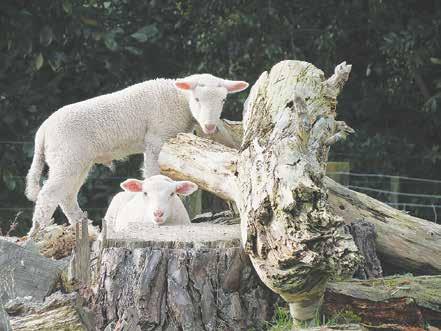
ABOMASAL BLOAT in lambs leads to excess gas in the abomasum, which causes it to expand like a balloon. This can rupture the abomasum wall and crush surrounding organs causing death.
It is believed to be primarily caused by the bacteria Sarcina ventriculi. However, clostridial species such as Cl.sordellii and Cl.fallax can also cause bloat. Warm milk (lactose) entering the abomasum provides these bacteria with an ideal substrate for fermentation and to produce excess gas.
However, adding yoghurt to cows’ milk or milk replacer can put an end to the abomasal bloat
that is all too common in artificially reared lambs.
This simple Norwegian technique, which uses acidophilus yoghurt (available in every supermarket), was adapted for use in New Zealand by Waikato farmer Claire Bull and veterinarian and farmer Jenny Burton.
It involves adding yoghurt to a mix of calf milk replacer and leaving the mixture warm for 8-12 hours.
The resulting yoghurttype mix is then added to the usual daily milk ration at a ratio of 1:7. This yoghurt mix will keep in sterile containers in a fridge for up to seven days and 200ml can be retained and used as a
starter for the subsequent batch.
If there are only a small number of orphan
GRASS STAGGERS (hypomagnesaemia – magnesium deficiency) or milk fever (hypocalcaemia – calcium deficiency) can affect beef cows around calving.
These diseases can be caused by both dietary factors and high levels of potassium in the soil.
While metabolic disorders in beef cows are typically associated with sudden changes in the diet or underfeeding, low levels of magnesium (Mg) or high levels of potassium (K) in the soil can also be causal factors.
Milk fever tends to manifest as a dull, lethargic cow lying prone and unable to stand. The symptoms of staggers can appear similar although it is common to see trembling or shaking with abnormal skin twitches.
Cows with staggers may also become uncharacteristically aggressive or begin to thrash around. Left untreated both conditions can lead to coma and death.
Cows with milk fever are typically treated with calcium borogluconate solution given intravenously and/or subcutaneously, while cows with staggers respond to magnesium sulphate solution subcutaneously (never IV).
Most New Zealand soils have adequate magnesium (Mg). Up to 10kg/ ha/year is deposited in rainfall and sea spray on coastal areas, but pumice soils, such as those found on the volcanic plateau, have very little Mg so will need Mg fertiliser to overcome deficiencies.
To reduce the incidence of grass staggers, soil Mg test results of 20-30 are needed. Soil Mg levels should be monitored over time and maintenance dressings of 5-10kg Mg/ha/year applied.
Fertiliser options to increase Mg levels include dolomite and serpentine super, although the latter is a slow-release option.
High soil potassium (K) levels can cause both grass staggers and milk fever. Potassium displaces Mg from exchange sites reducing Mg levels in plants and animals and this causes grass staggers. In these situations, supplementing cows with magnesium oxide before and after calving will alleviate symptoms.
High K levels will also restrict a plant’s ability to uptake calcium and therefore the absorption of calcium into the bloodstream. This can lead to milk fever in beef cows in late pregnancy or at calving.
Farmers should avoid grazing paddocks with high K levels around calving, as well as paddocks that have recently been dressed with potassic fertiliser. In practice, this means ideally applying potassic (K) fertilisers after calving.
It is recommended that beef cows not be given a calcium supplement precalving, as a high dietary intake of calcium can interfere with a cow’s ability to mobilise her own calcium stores. Calcium deficiencies are considered rare in NZ because of this country’s young soils and the supply of plant available calcium through super-phosphate and lime fertilisers.
Magnesium can be supplemented via magnesium oxide powder sprinkled on feed, or in severely deficient areas using a magnesium bolus.
Source Beef+Lamb NZ
lambs, one tablespoon of acidophilus yoghurt can be added and mixed well into 500ml of cow’s milk
or reconstituted powder just before feeding.
Lambs affected by bloat can also be treated
with 40-60ml of acidophilus yoghurt, administered through either a drench gun or stomach tube, three times a day.
Lambs should always have access to fresh, clean water.
It is the probiotics in the yoghurt that prevent the pathogens multiplying by competing with the bad bacteria. They also improve immune function and can reduce scouring. Prebiotics, also found in yoghurt, stimulate the growth of good bacteria.
Ideally, lambs should not be introduced to the warm yoghurt milk mix until they are five days old. On the first two days, the lamb should be fed
warm ewe or cow colostrum (collected within 48 hours of the ewe or cow giving birth) and on days three to five, fed warm milk replacer. From day seven there can be a gradual transition from warm to cold feeding. If abomasal bloat is a problem in artificially reared lambs, the wheybased milk powder could be considered as an alternative to whole milk. Whey-based powder doesn’t usually cause bloat and can aid rumen development if lambs are also given access to good quality pellets or hard feed.
Source: Beef+LambNZ @rural_news facebook.com/ruralnews
We deliberately challenge our Romneys by farming them on unfertilised native hill country in order to provide the maximum selection pressure and expose ‘soft’ sheep.
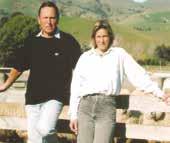
FERTILITY
GROWTH RATE & SURVIVAL
Over the last 20 years ewes (including 2ths) have scanned between 190% and 215% despite droughts.
Over the same period weaning weights (adj. 100 days) have exceeded 36kg from a lambing % consistently above 150%.
• All sheep DNA and SIL recorded.
• Ram hoggets have been eye muscle scanned since 1996.
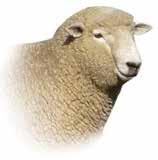
• Ewe hoggets have been mated (to Romney sires) for over 20 years.

• Breeding programme puts an emphasis on worm resilience - lambs drenched only once prior to autumn. FE tolerance introduced more recently.
• Scored for dags and feet shape. Sires DNA rated for footrot and cold tolerance.
• We are ‘hands on’ breeders with a focus on detail and quality.
• We take an uncompromising approach - sheep must constantly measure up.
We
Suffolks
www.glenviewromneys.co.nz
Phone 06-372 7820
aim to breed superior Romneys that produce the most from the least input.
cally are around three metres longer and can be more difficult to manoeuvre and lift bales.

DESIGNED AS an alternative for those farmers who only feed round or large square bales, the Hustler BaleXpress bale feeder can cope with any bale sizes in either format.

The machine also deals with crops including straw, hay, chopped silage and vegetable waste. The company suggests it also offers a more convenient option for those farmers that have a front end loader to load the wagon. This is rather than the more typical units with rear lifting forks, which because of their length, typi-
Offered in three models – the TX 605, TX 805 and TX 1005 can handle loads of up to 8000, 12,000 and 15,000kg respectively. This means these bale feeders can handle 4 to 6, 6 to 8 and 8 to 10 rounds, depending on size – or 3 to 4, 4 to 5 or 5 to 7 large square bales.
Featuring the same hydraulic pushing blade as the Combi range, the bales are moved forward to the discharge area and 1650mm wide discharge conveyor.
The configuration means there is
With up to a 12m working width the Einböck PNEUMATICSTAR is the ideal machine for seeding large areas at very low cost. High quality, solid construction.
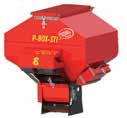
no need for floor chains, resulting in reduced maintenance and more precise control of how much material is deposited in the feed windrow.
The machines’ adjustable sides means they are capable of dealing with round bales of up to 6 feet in diameter and squares of up to 5 feet long. Meanwhile, the bale feeders’ compact overall dimensions offer improved manoeuvrability, with the manufacturer also claiming the highest bale capacity on the market.
Carried on heavy-duty axles and utilising tandem walking beams or tandem suspended undercarriages, Hustler points out the use of heavy-
The P-BOX STI pneumatic air seeder is highly accurate for broadcasting seeds like grass or brassicas. Easy adjustment from 1kg to 300 kg/ha. Plug and play using the Info plug on your tractor (for radar speed and linkage position).

duty, self-aligning bearings and protected shafts helps durability and prevention contamination. The bearings are also positioned outside the feed chamber.
The floor of the TX series is manufactured from 15mm thick Puck Board, which helps reduce bale friction and impart durability and is offered with a 10-year warranty.
Gearboxes are powered hydraulically with the machines needing two double-acting flows.

The drives feature 6-tooth sprockets manufactured from HardLine steel – the same material used for bulldozer blades. Meanwhile, their small diame-

ter means less torque in the driveline and lower oil flow requirements.
The bale feeders are said to offer excellent visibility from the driver’s seat. Ease of use is complemented by a centralised greasing system for the axle assemblies and built-in chain tensioners for the discharge elevators that are also easily adjusted.
A range of options includes Hustler’s FeedLink weighing and management system – that can be fitted during manufacture or at a later date – hydraulic braking, high-visibility kit, oversize tyre equipment and a hydraulic parking jack.
www.hustlerequipment.com


DEERE NZ territory manager Jaiden Drought was elected new president of the Tractor and Machinery Association (TAMA) at its August annual meeting.
Meanwhile, Chris Bain was re-elected for another year as vice president and the organisation also expanded its management board from three to six. Ian Massicks, Josh Vroombout and Richard Anderson were reappointed, while three new members were added –Liam Hines, Paul Holdaway, and Tim Fanning.
Outgoing president Kyle Baxter was thanked for his seven years of service in leadership positions at the organisation, which represents New Zealand’s farm machinery importers, manufacturers and retailers.
TAMA chief executive officer Phil Holden says Baxter served three years as president, two years as vice president and two years on the leadership group, which was a huge commitment.

“TAMA has grown during his period of leadership, and he is leaving it in a strong financial position.”
Drought echoed Holden’s words saying Baxter leaves TAMA in good stead.
“We now have several young people on the leadership committee who are ready to grab the ball with both hands and take the opportunity to think outside the square. We can try to do some different things to give TAMA members more bang for their buck.”
Baxter says that after
seven years in leadership positions the time was right to step aside. He added that some of the highlights during his time of leadership at TAMA included helping to raise the Government’s awareness of how the border restrictions during the pandemic impacted access to overseas machinery technicians. He also pointed to expanding the membership of the organisation to include farm machinery retailers and associated members.
Baxter believes that more detailed reporting has given distributors and retailers the ability to improve the services they provide and the type of machines they offer in different areas.

“Along the way, we have held two successful TAMA conferences. Besides these being great networking opportunities, they have covered such relevant topics as recruitment of staff and what dealerships of the future may look like,” he says.
“Looking ahead a challenge facing the industry is the right to repair equipment, which is currently under discussion in both the US and Australia. New Zealand will follow Australia’s lead when it comes to allowing farmers and contractors to repair their machines.”
Baxter reckons that local machinery distributors are not overly resistant to the right to repair or carry out certified software upgrades. All dealerships sell spare parts over the counter that owners use to repair their machines.
“However, there is more concern about the right to modify equip-

ment outside of manufacturers’ design parameters. Whether this is structural or software changes to integral parts of the machine,” he explains. “A good example is the mod-

ification of engine emission controls on engines, or the ability to modify software designed to meet safety regulations.”
@rural_news facebook.com/ruralnews
Some farmers think a telehandler is for the big farms or best suited to European or North American operations. But you’ll be surprised to know that telehandlers are the fastest growing on-farm utility category in the New Zealand market. You’ll also be surprised by what you can do with a LOADALL and how much it improves productivity on all types of farms. You won’t however be surprised to know that the JCB SERIES III is the world’s No.1 LOADALL.
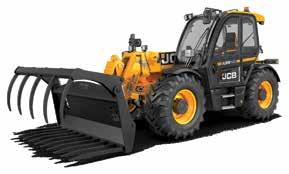
WITH THE German Agritechnica Event just a few weeks away, it looks like the key tractor makers are playing a game of top trumps with their flagship 4-wheel drive machines.
Claas was first to show its hand with the newly released Xerion 12 series that peaks at 653hp, quickly followed by New Holland who launched its latest T9.700 offering a max of 699hp.
However, both these machines have been gazumped by Case IH,

who used the recent Farm Progress Show in the US to launch the Quadtrac 715 that peaks at a mighty 778hp, delivered by its new 16-litre FPT Cursor engine.
The company says the tractor was developed to meet a growing trend on large farms that want to tow bigger and wider implements. The 715, only available in a tracked format, tops off the recently revised Quadtrac 525-645 AFS Connect models.
While the new flagship is only 10cm longer than the 645, externally
it appears significantly larger by way of a massive new engine hood. This sets it apart from the other models in the range that eventually will trickle down to the rest the Quadtrac range, while also becoming part of a styling revamp for all Case IH tractor ranges in the future.
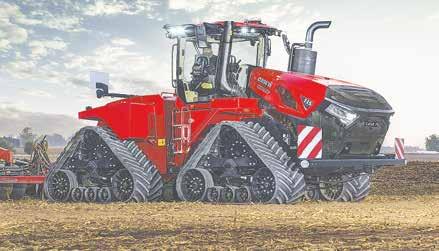
The revised hood offers easier service access, by lifting nearly a third higher. So vertically challenged operators will
be pleased to hear that. However, the hood is impossible to reach from the ground, so designers have incorporated electric lift actuators to take over the task, via a switch located in the toolbox near the cab steps.
The 16-litre engine, equipped with a twinstage intercooled turbocharger, is 23% larger than the Cursor 13-litre block in the Quadtrac 645. It delivers the peak 778hp at 1900rpm, with
3255Nm peak torque at 1400rpm, mated to the latest 16-speed PowerDrive powershift. Refuelling stops are reduced by using wider saddle tanks on the rear frame, holding a total of 1968 litres of diesel, an increase of 11% over the Quadtrac 645.
New heavy-duty track units are 305mm longer for 6% more ground contact than the smaller 645. The drive wheel diameter has been increased
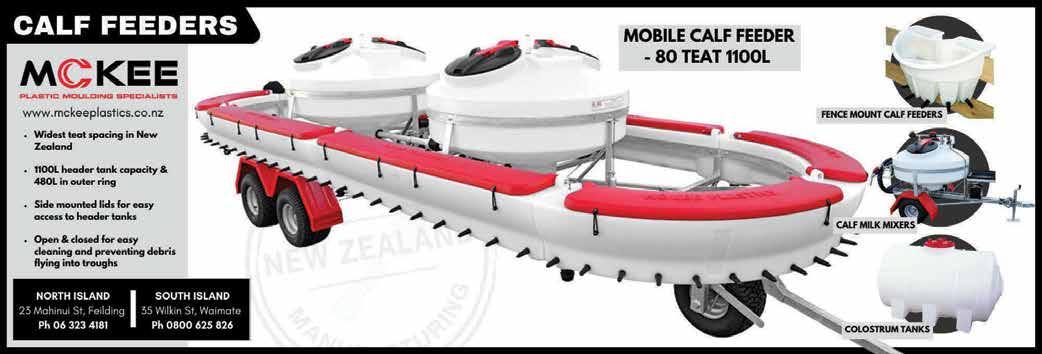
by 10cm to around 1m, allowing five track lugs to be engaged with the drive wheel rather than previous four. A design inclusion to handle the higher torque output and also maximise track life.
While the raw pulling power of the drawbar is said to be adequate for most North American farms, the company notes that around 60% of Quadtracs delivered to Europe are fitted with an optional rear Cat IV linkage that lifts up to 10.1t.
Hydraulics are offered with up to eight remote valves, supplied by either a 216 l/min or optional 428 l/min twin-flow SmartTorque hydraulic pump.
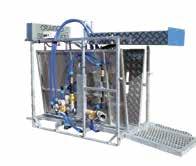
The 715 also features new LED road lights, complemented by work lights that produce an output of 25,420 lumens, for 11% more illumination power. In addition, optional cab-mounted
work lights are available in three packages, with the top-level package delivering an additional 45,600 lumens output and 360 degrees coverage.
Other practical features include new grab rails around the roof to aid safe window cleaning and a new front wiper that increases total swept area.
Internally, alongside new storage areas, an integrated rail system on A-post ensures easy monitor attachment, and space for a second AFS Pro 1200 terminal.
AFS Connect allows vehicle and agronomic data recording, including two-way transfer between the tractor and my CaseIH online portal. This also allows remote machine monitoring/ support by owners and – with permission – dealers.
@rural_news
facebook.com/ruralnews
WHILE SOME stand-holders at field days spend their days chasing youngsters off their displays, others take a more reasoned approach as these children may grow up to be the customers of tomorrow.
It looks like John Deere dealer Brandt, operating throughout the North Island, falls into the latter group and has taken things just a little further.
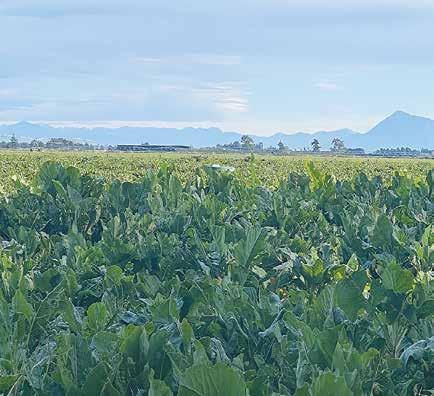
On Friday, September 29 between 9am-12pm (during the school holidays), young rural folk will be treated just like their mums and dads. They are invited to the second Brandt Trade a Toy Day throughout the group’s locations.
Designed as a fun day for everyone, children are invited to come along and bring in any used toy, no matter the size or make, and work through a trade-in for a new replacement John Deere toy.
Just like their parents, these future farmers and growers will be teamed up with a friendly Brandt staff member who will write up an appraisal – just as if they were trading a real-life piece of equipment.
Then if they’ve been watching mum or dad, will probably have a haggle and quote the farm’s account number before walking away with the latest addition to their toy box.
Traded toys of decent condition will then be donated back out to local communities through playcentres and other worthy causes (T&C’s apply).
Leading up to Trade a Toy Day, there is also colouring competition available to print offline or to pick up from local Brandt branches, with a chance for youngsters to go into the draw to win an awesome prize pack. This competition closes on Friday September 29 at 12pm.
For more information visit the Brandt Trade a Toy Day at: https://more.brandt.ca/nz/johndeere/promotions/brandt-trade-atoy/
Nelson

Oct 22, 2023 6 Days
Stay in sunny Nelson & Blenheim. Enjoy a Queen Charlotte Sound cruise, lunch & wine taste at Seifried winery, a Greenshell Mussel Cruise. Visit Motueka, Kaiteriteri, Abel Tasman National Park and Pupu Springs. Train to Omaka Aviation Centre.
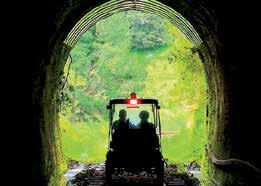



“I have no doubt that if I did not have a Quadbar fitted, my accident would have been fatal!”





– Rozel Farms



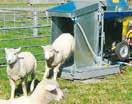


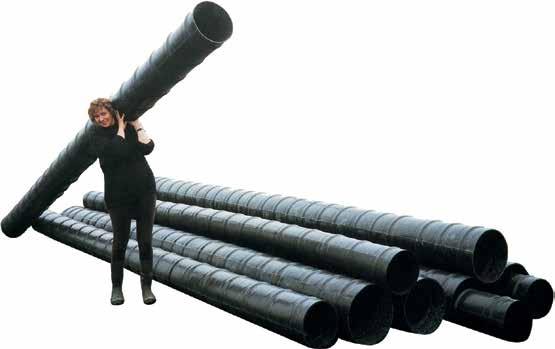


“The Quadbar saved our employee from significant injuries.” –Colin van der Geest





• Stand for current, updated science on ruminant methane emissions.
• Stand for truth, facts and justice.
• Stand against lies, deception and weak leadership
• Stand against political untruths
Join the Methane Science Accord at methane-accord.co.nz and demand our politicians listen and act on our behalf
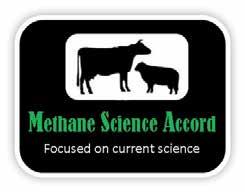
Independent of but supported by Groundswell, 50 Shades of Green, F.A.R.M., Rural Advocacy Network and 100 leading farmers across the country. Check out methane-accord.co.nz for more detailed explanations.
• Policy based on current, unrefuted science
• Recognition that ruminant emissions are insignificant and immeasurable
• Methane Taxing, targets, farm measurements, biotech tools are unnecessary
The science involving methane has evolved from being considered a threat under GWP100 to having its warming ability slashed by 300% - 400% under GWP* science. Since then, new science shows methane is even less potent as it is dominated by water vapour and can only absorb heat on weak, narrow bands on the electromagnetic spectrum. This science has not been disproven.
It is also a requirement under the Paris Agreement that no mitigation measures should be taken if it “threatens food production”. New Zealand is the most emissions efficient food producer in the world, feeding 40 million people. We cannot afford to lose 20% or more of our meat and wool production and 5% of dairy-output. Any production cut here will be produced elsewhere with a higher carbon footprint making a mockery of our sacrifice.
It is time to STAND. Help us take this message to our politicians.
Started by a team of concerned farmers and scientists, the Methane Science Accord does not receive any government funding therefore we are not swayed by political bargaining. We consider the economic benefits of protecting our biggest export earner and our rural communities to be of greater importance than serving political agendas. We know our position is also backed by sound science. We are a true voice for rural New Zealand and concerned New Zealanders. Truth not politics.
Signed by:
Jane Smith, Hamish de Lautour, Derek Daniell, Hamish Carswell, Helen Mandeno, John Sexton, Neil Henderson, Hamish Bielski, Deborah Alexander, Owen Jennings plus 100 leading farmers
P.S. If you could donate, even a small amount it would help to fund this campaign. Donate at methane-accord.co.nz Thanks.